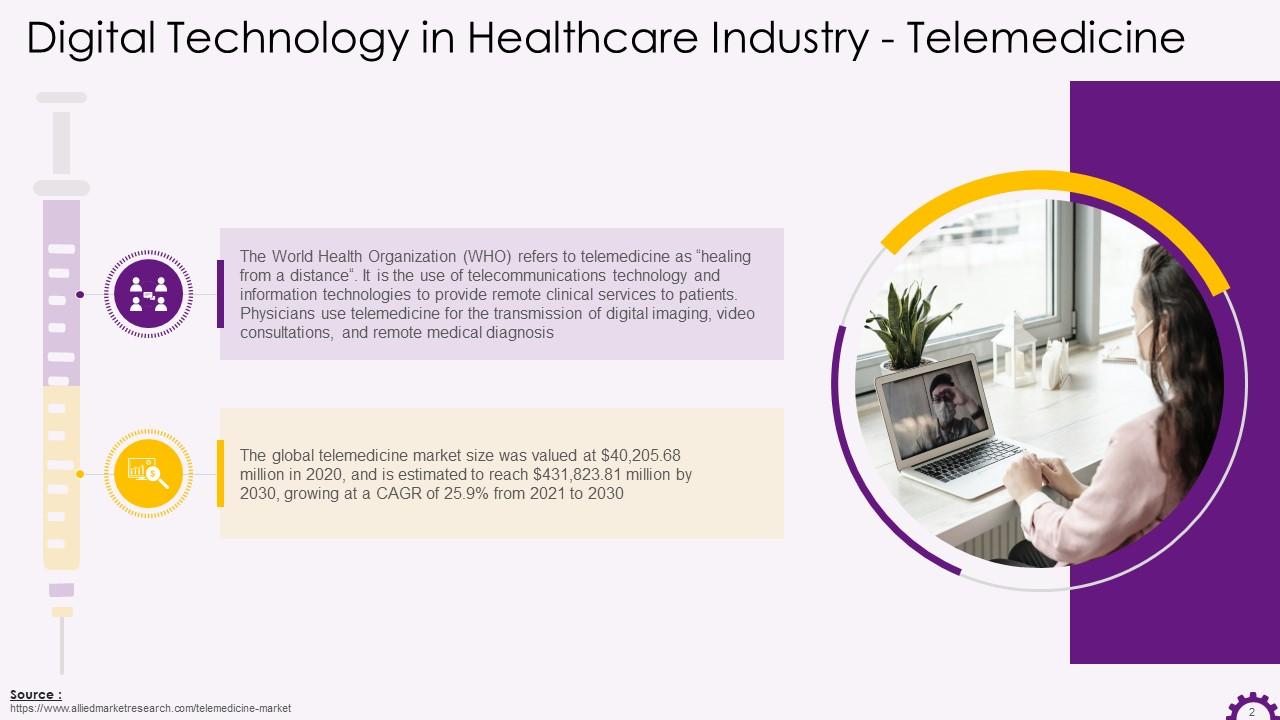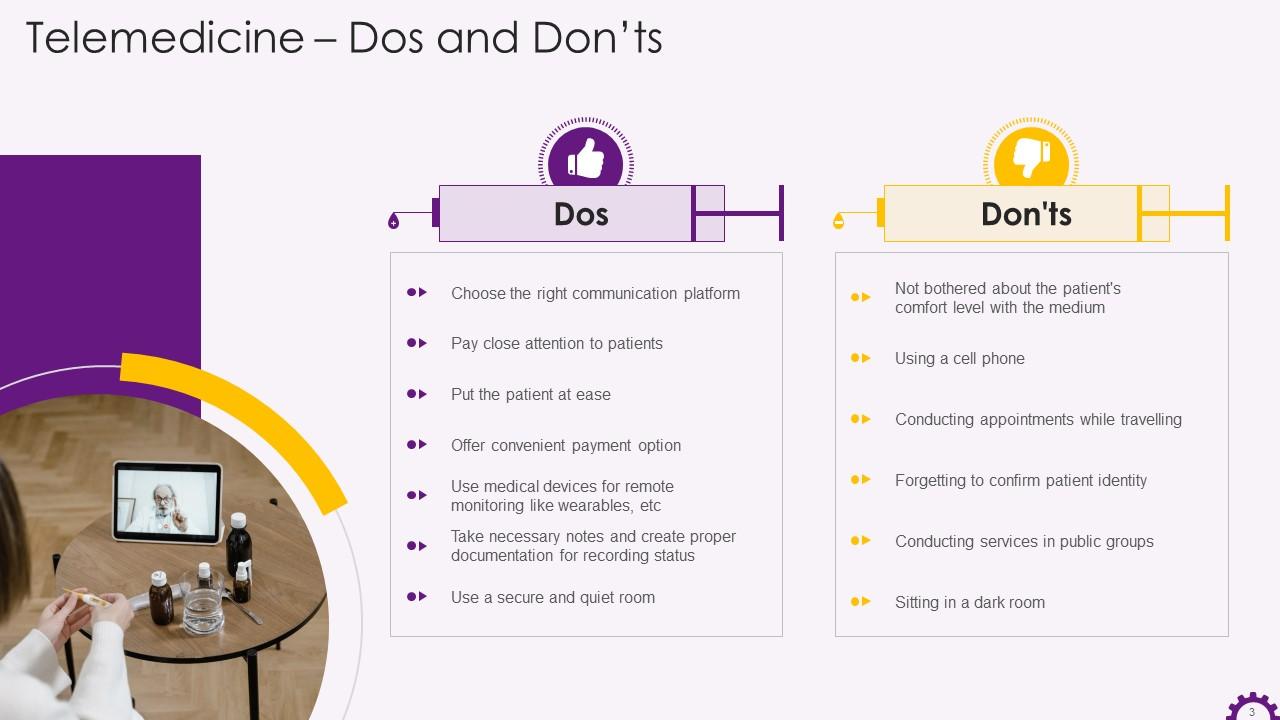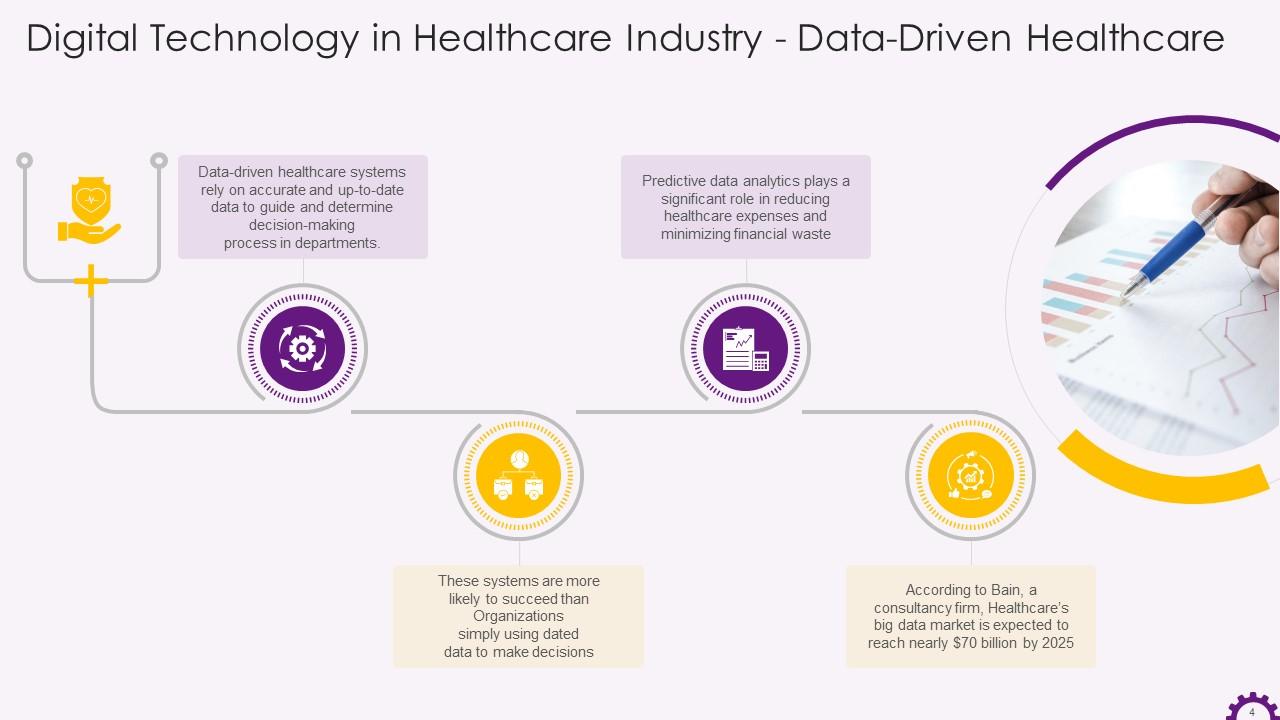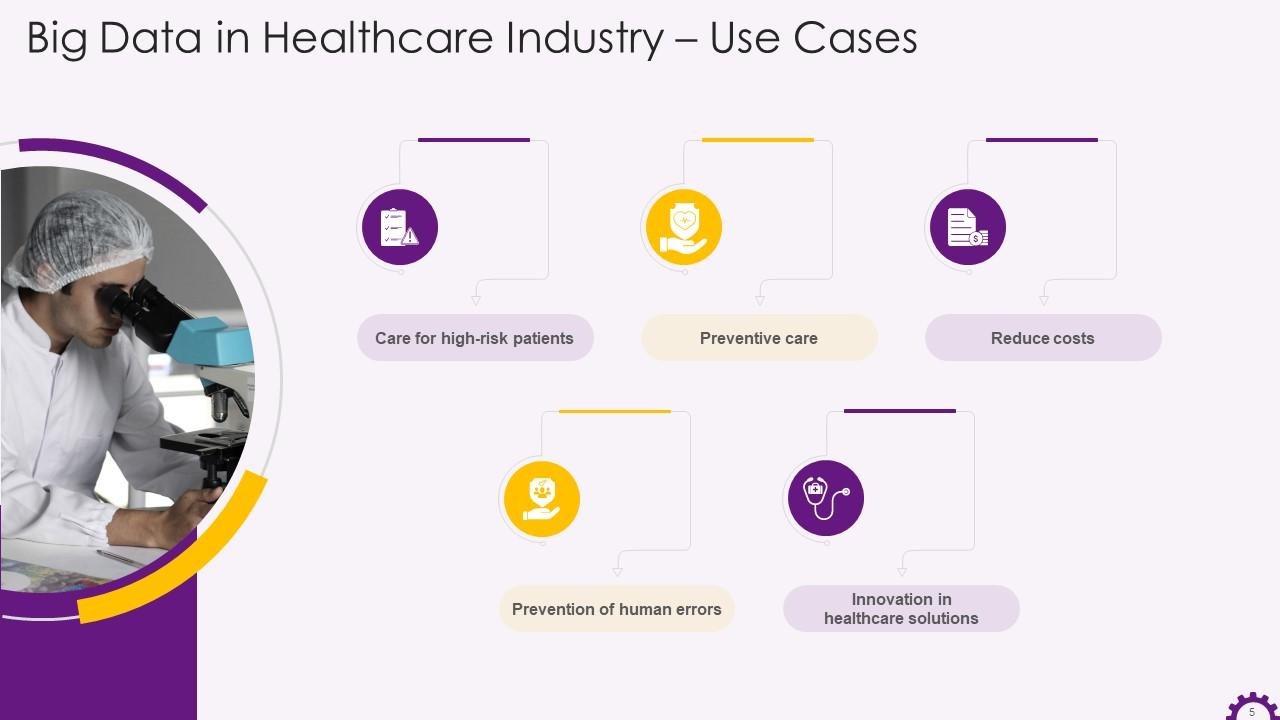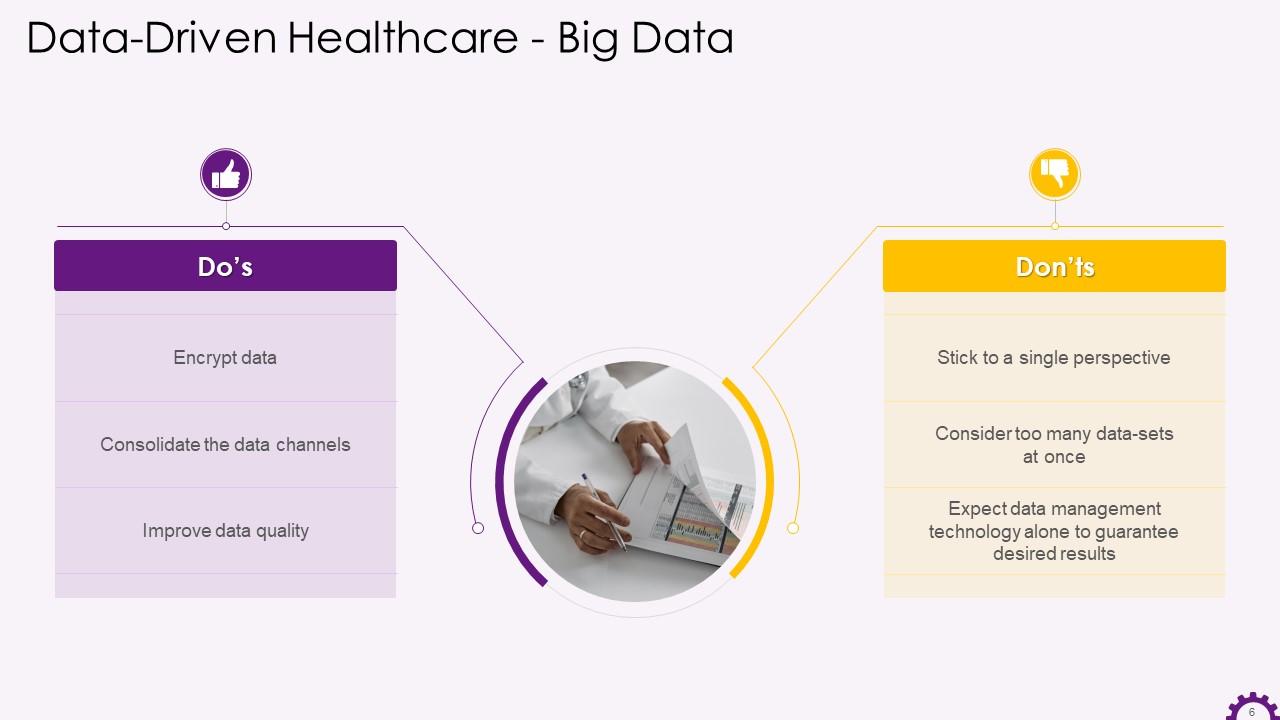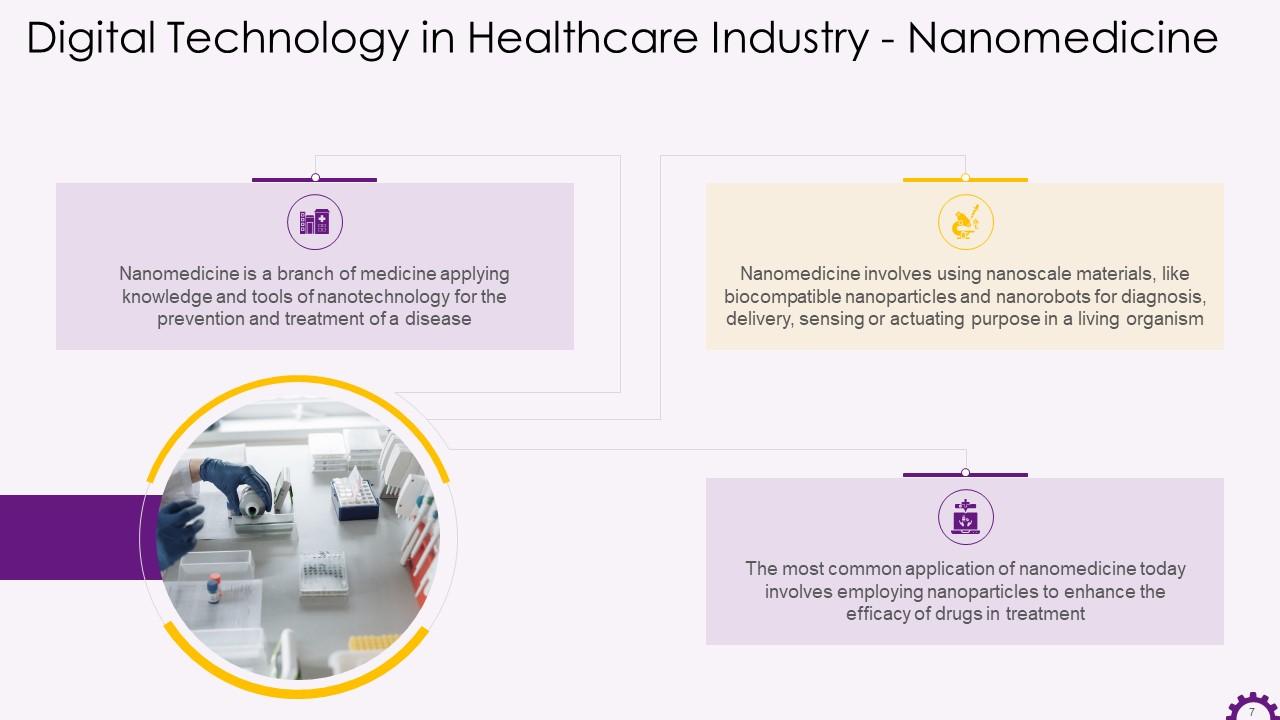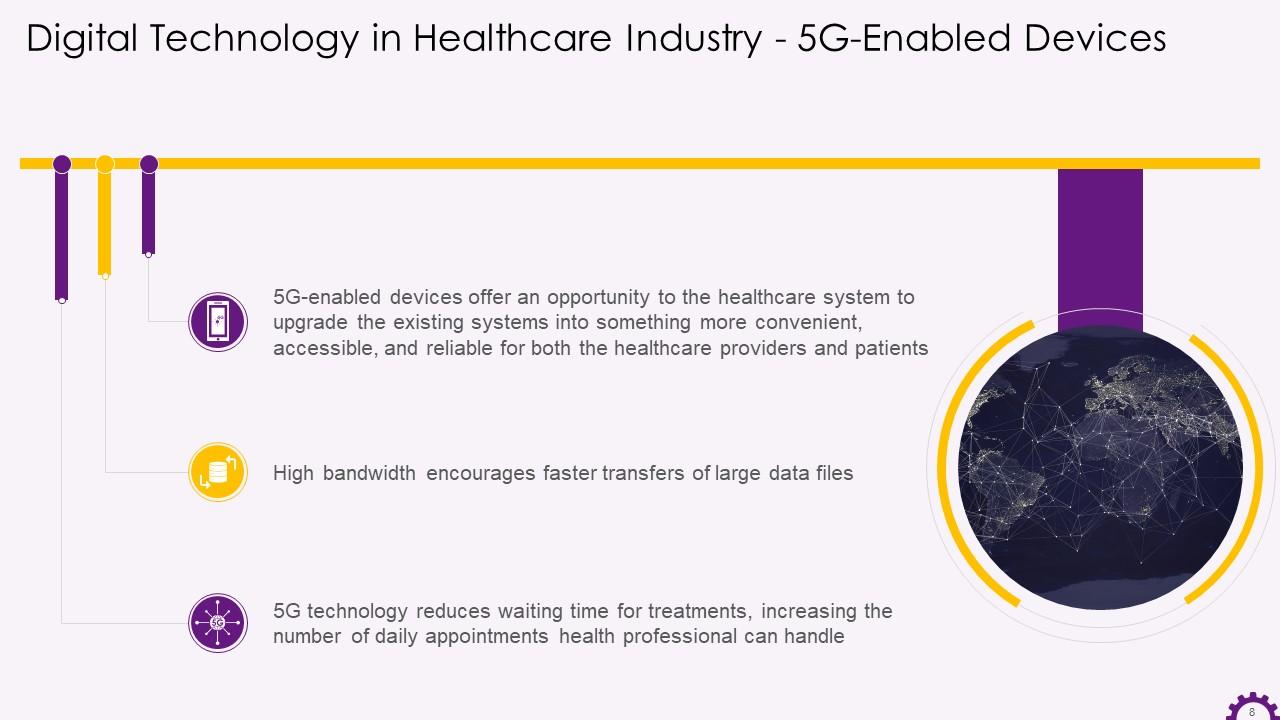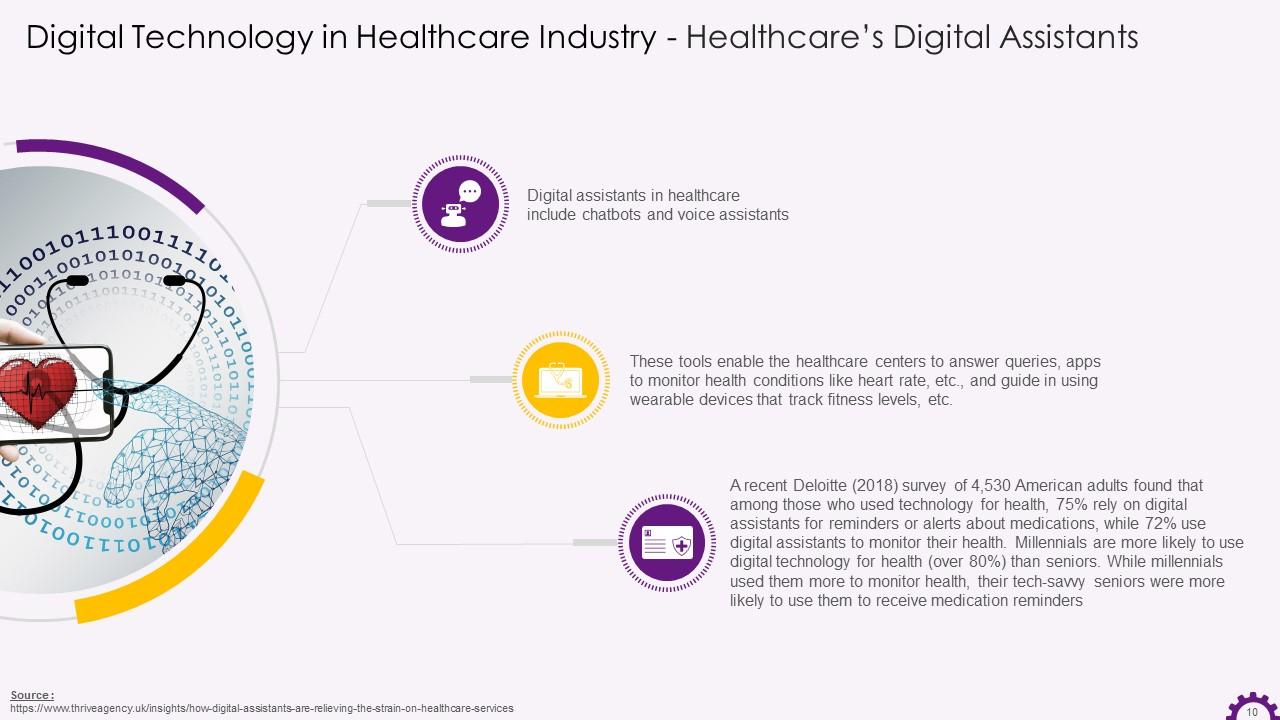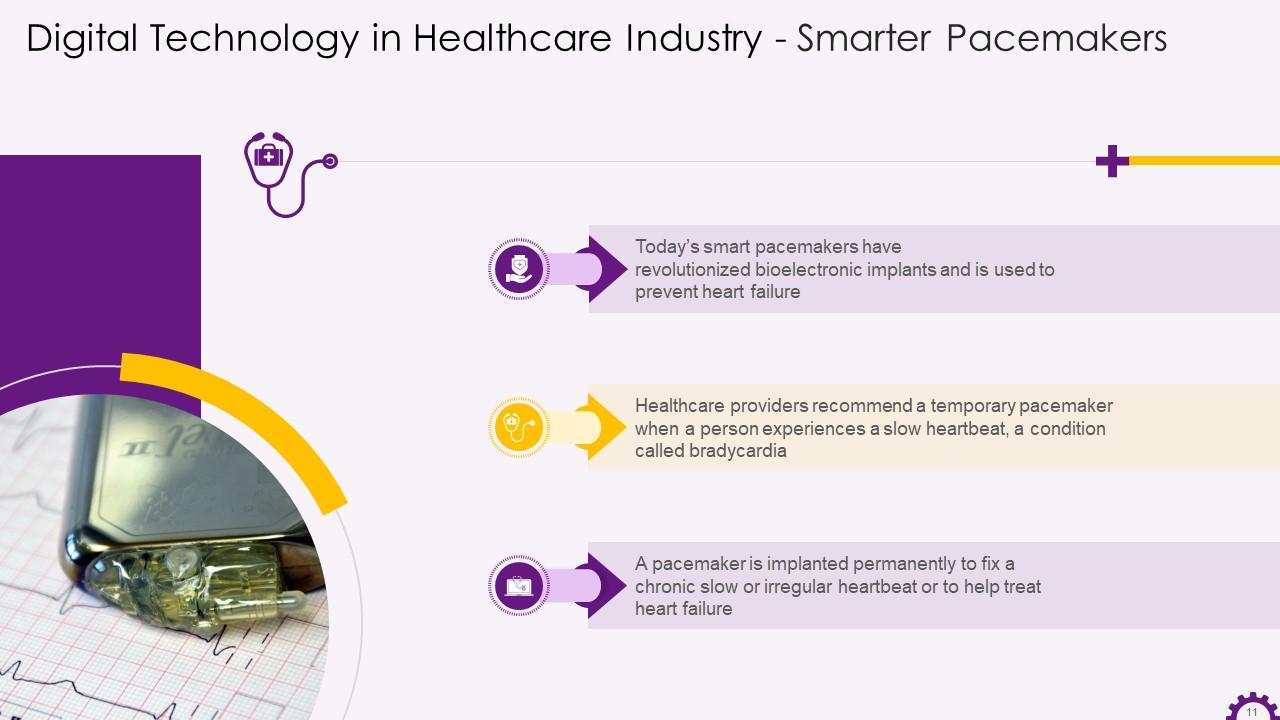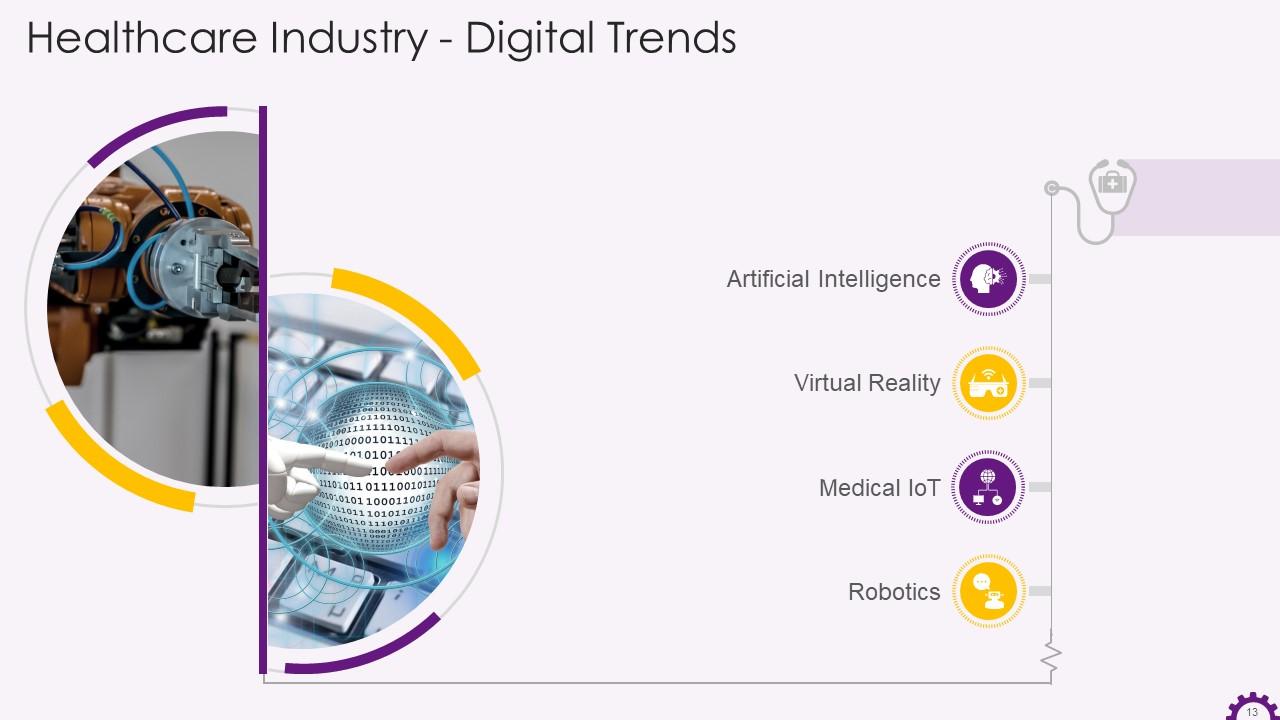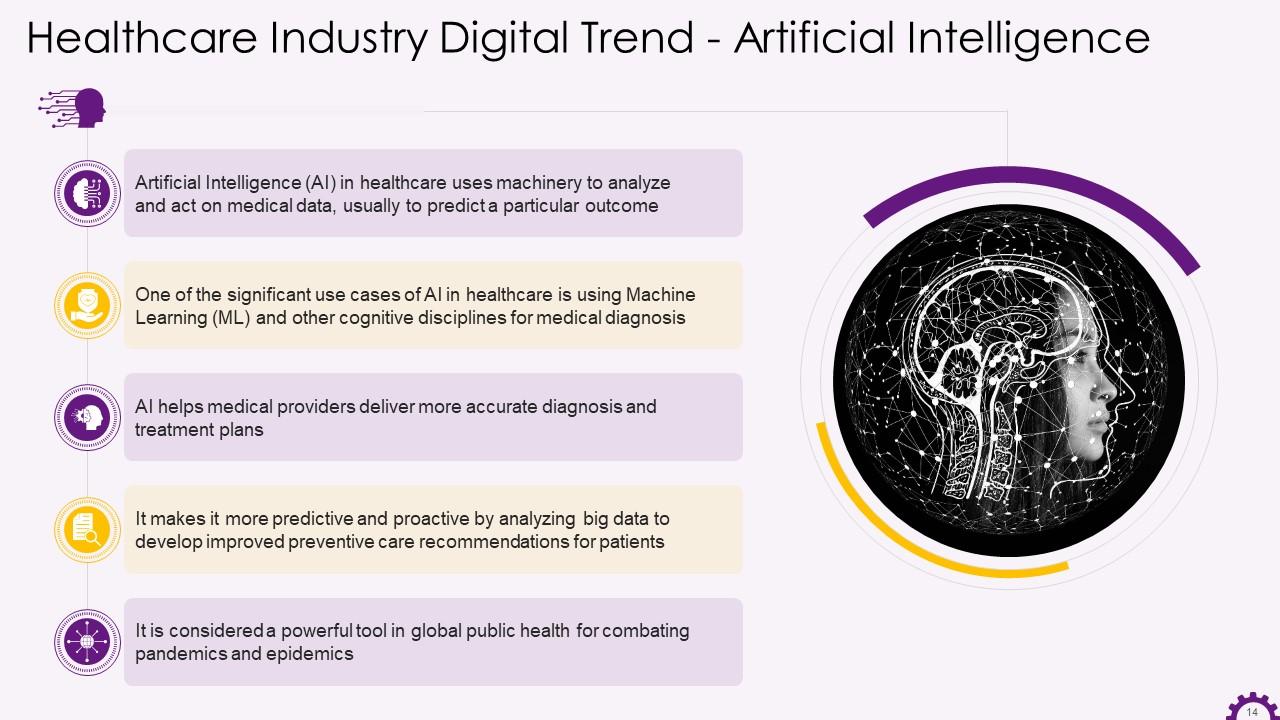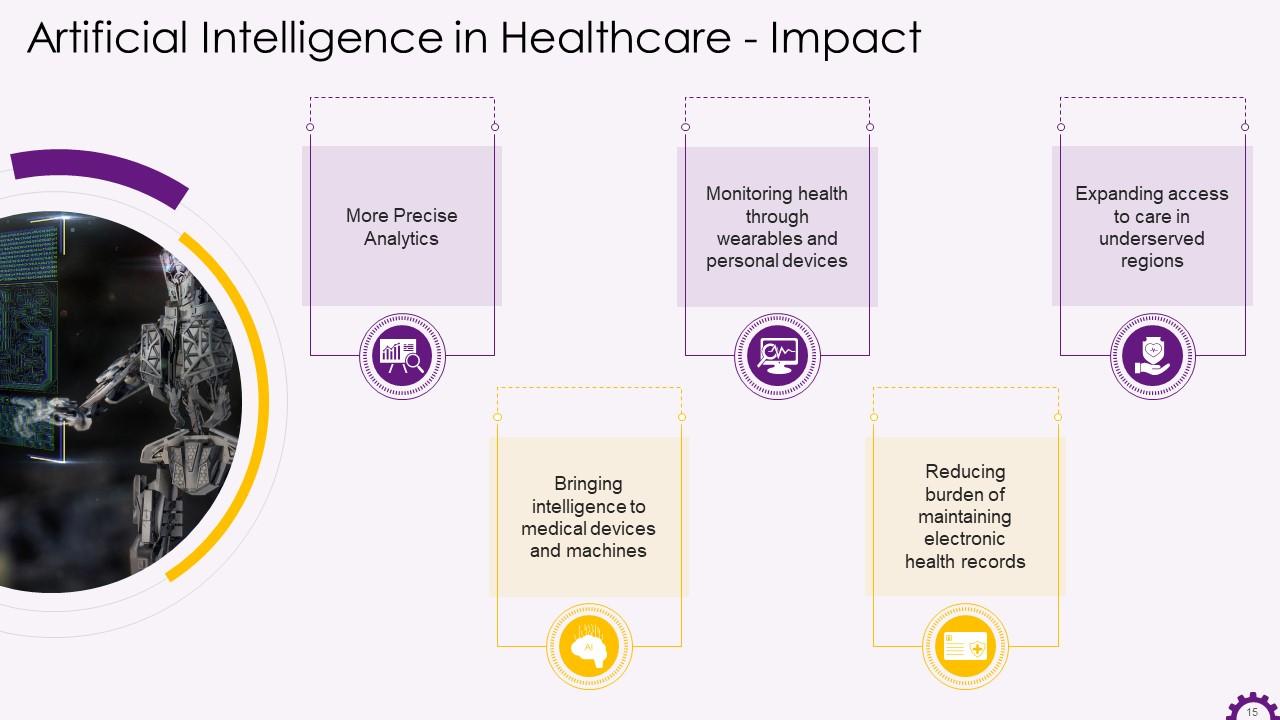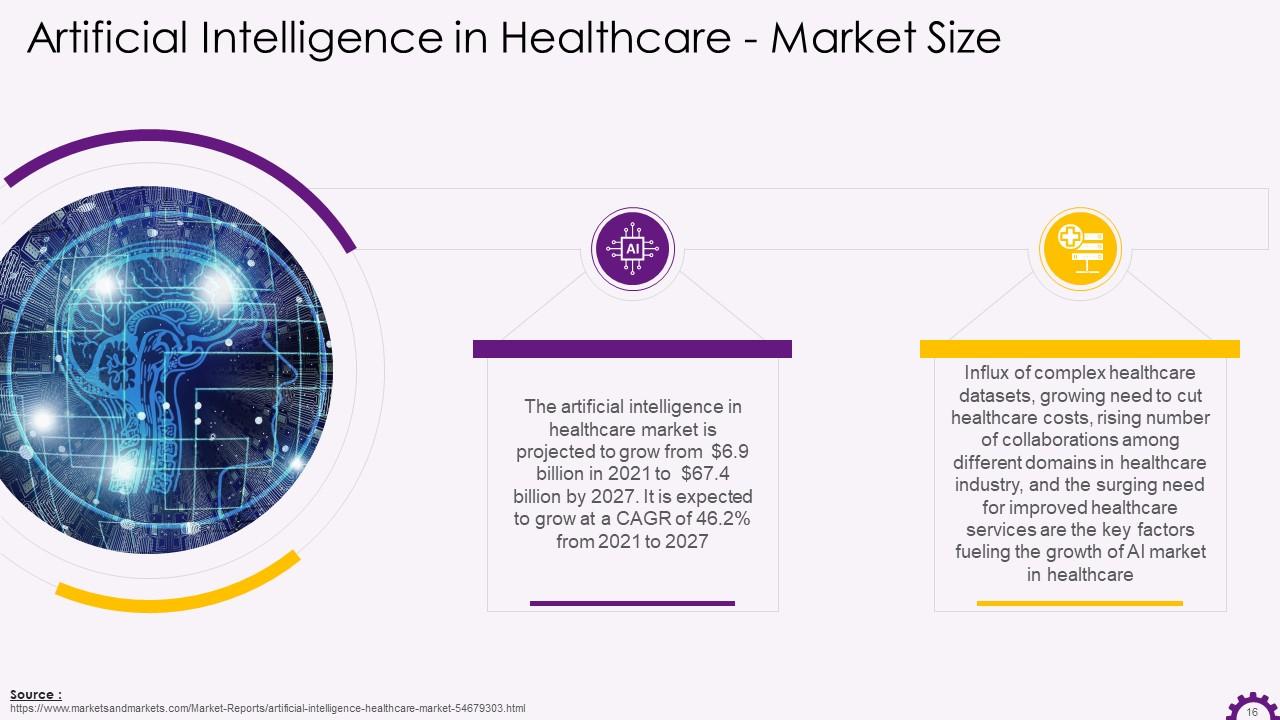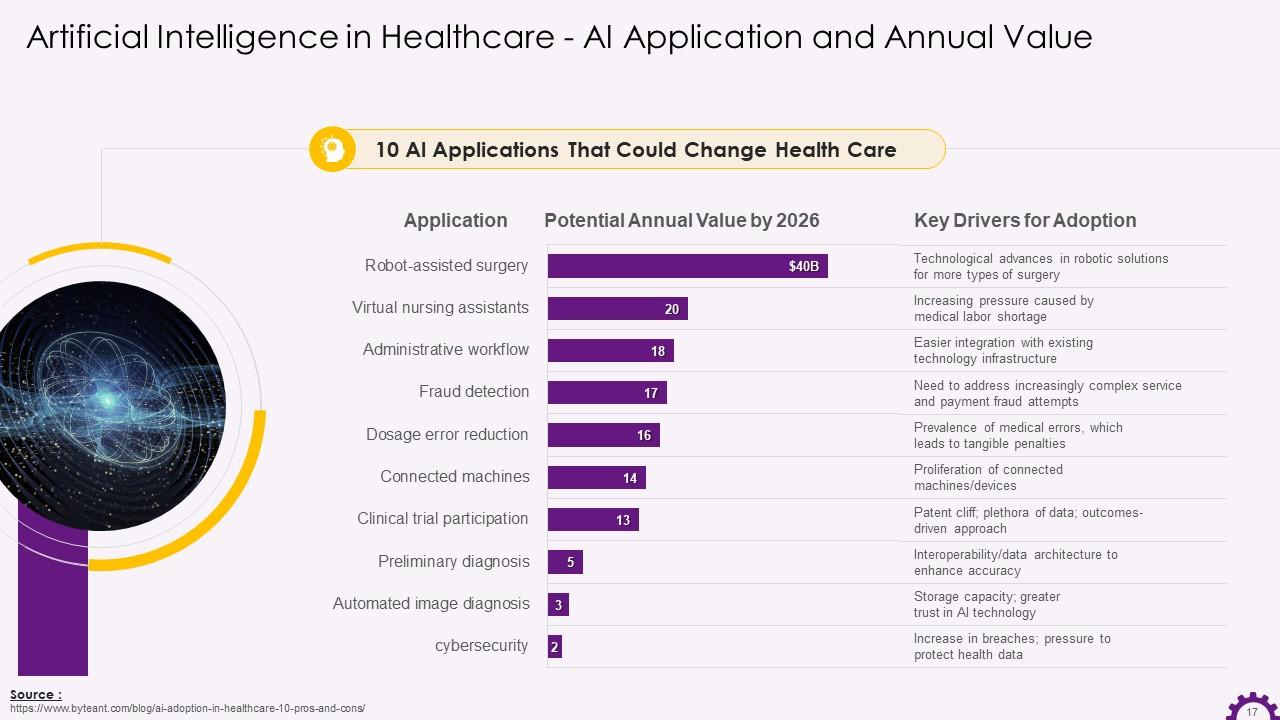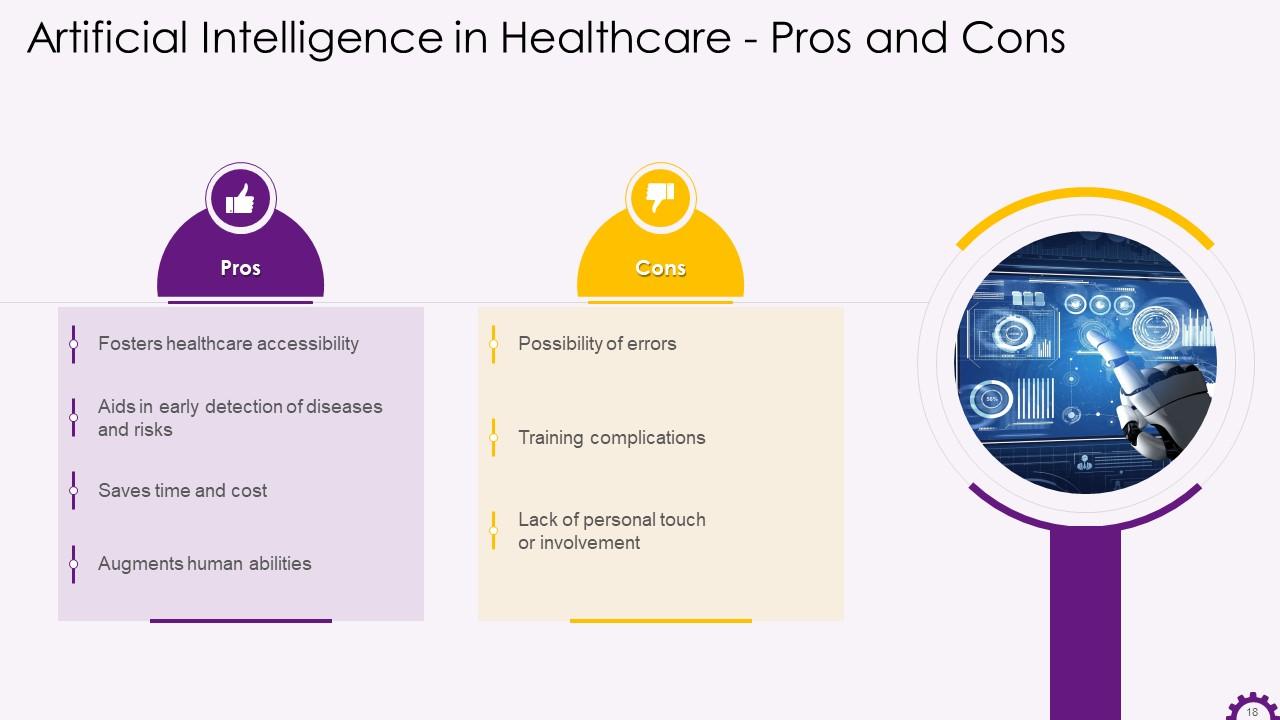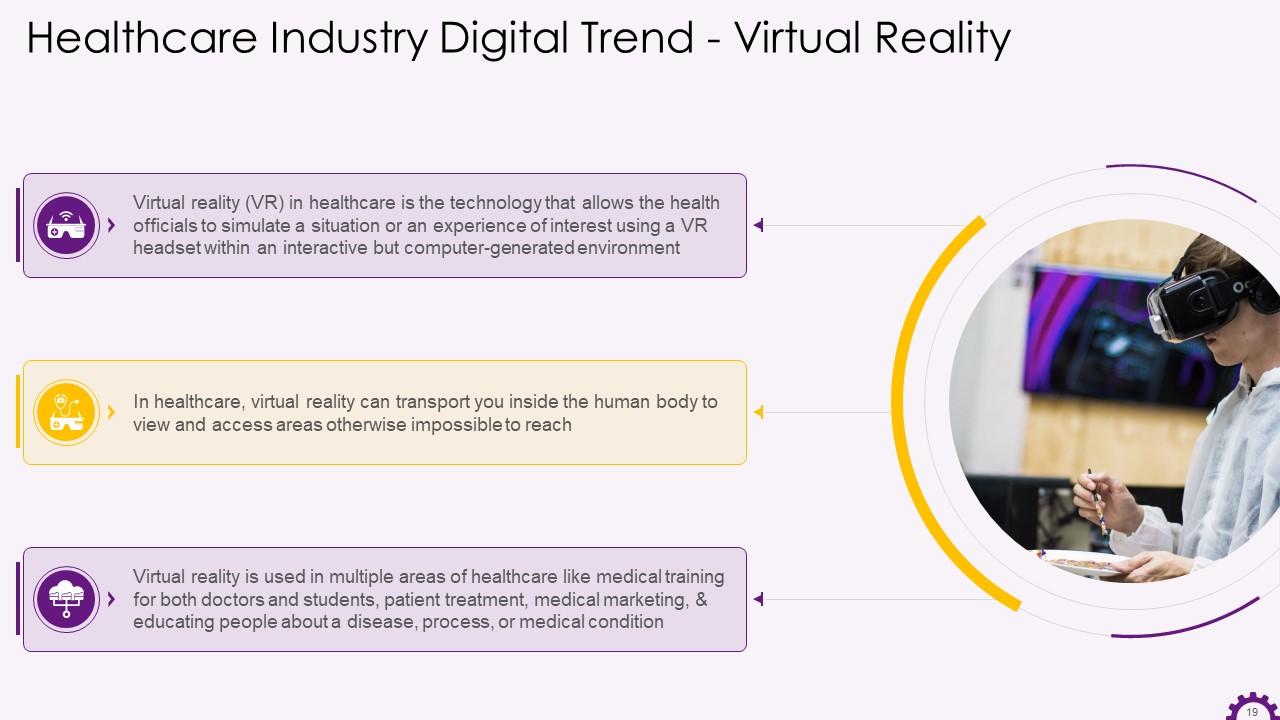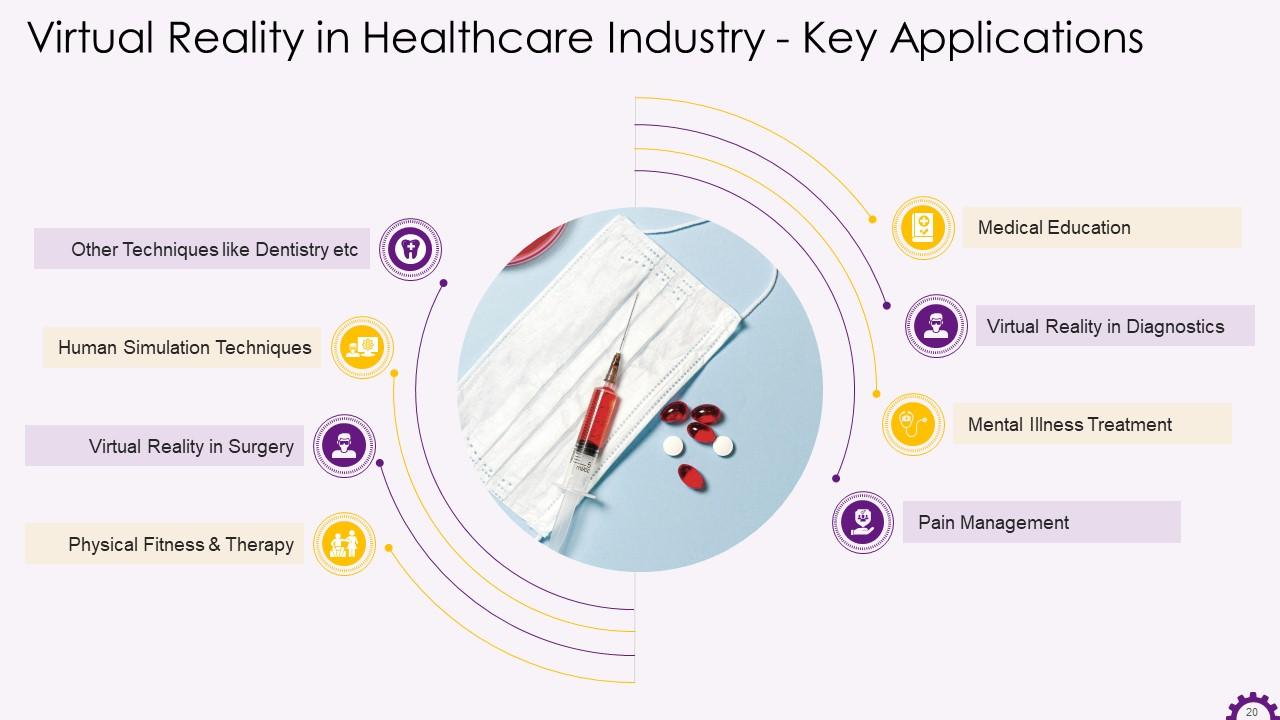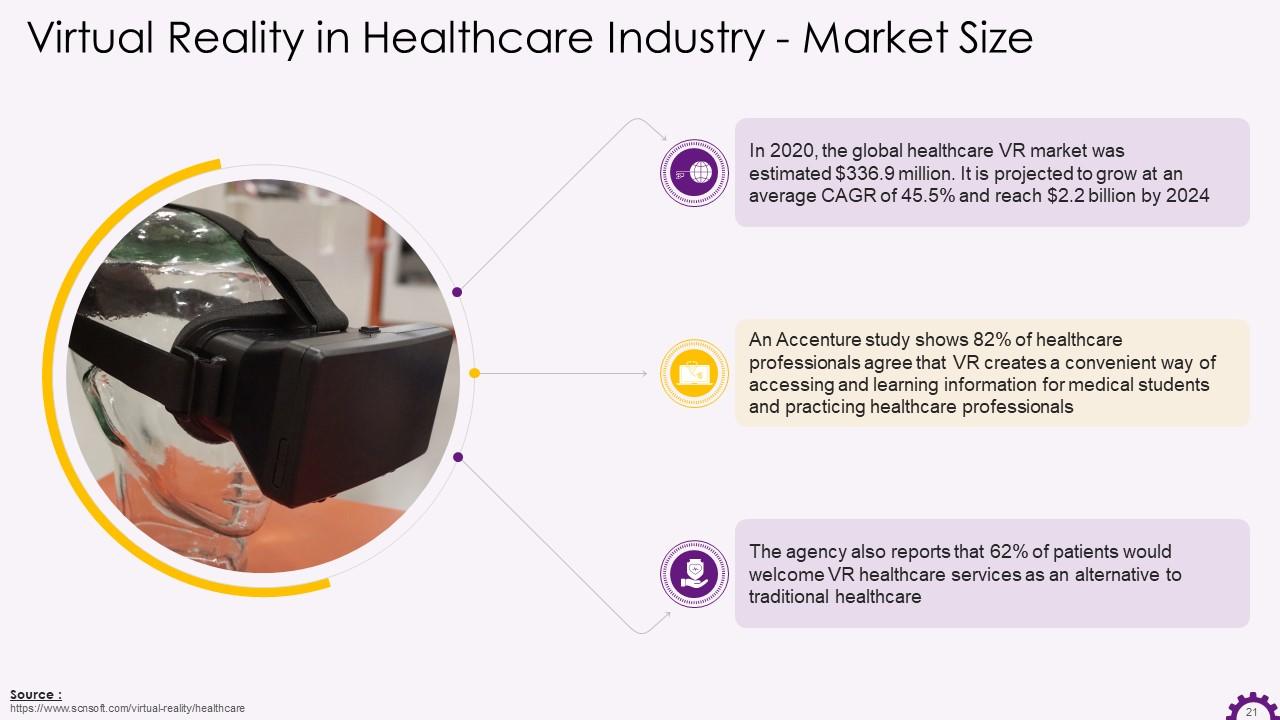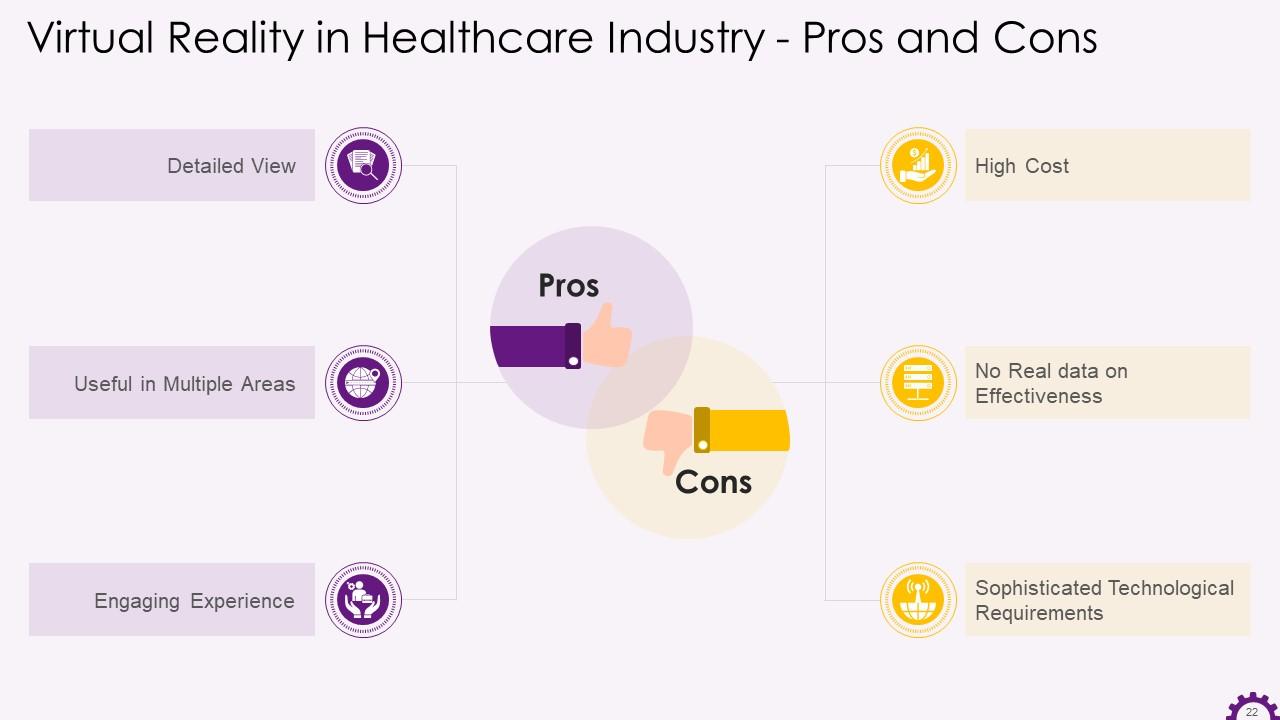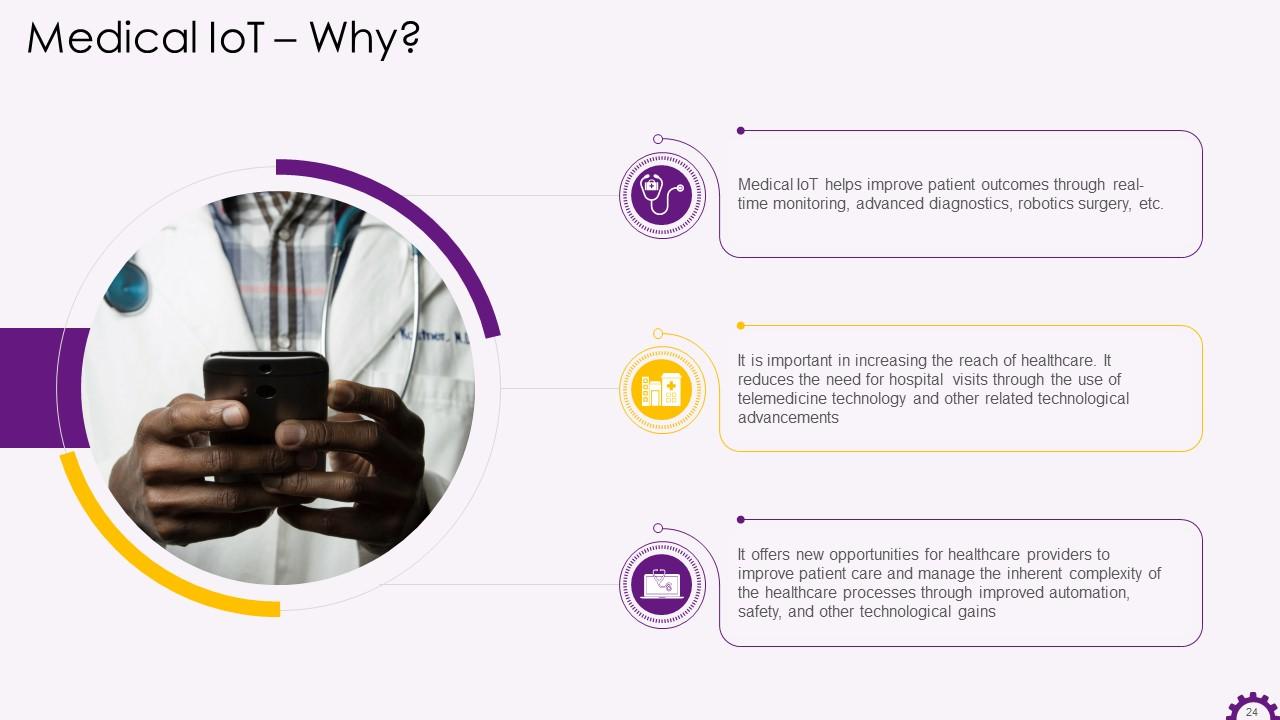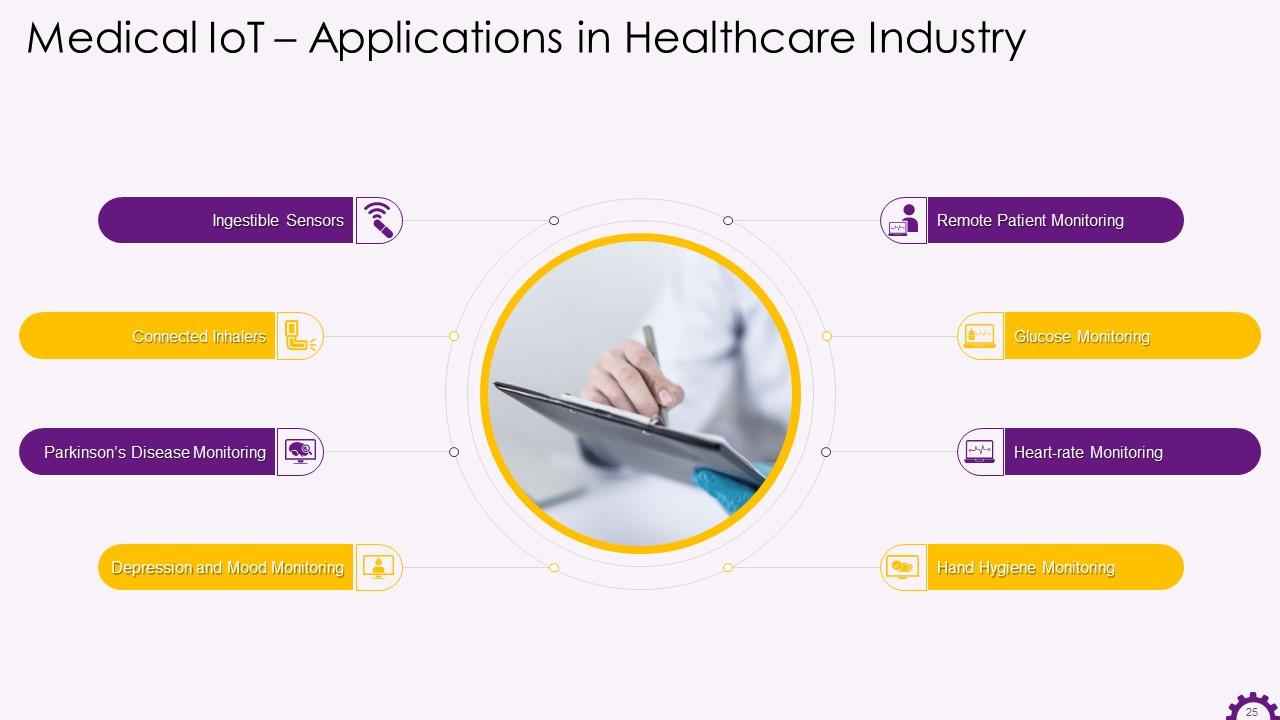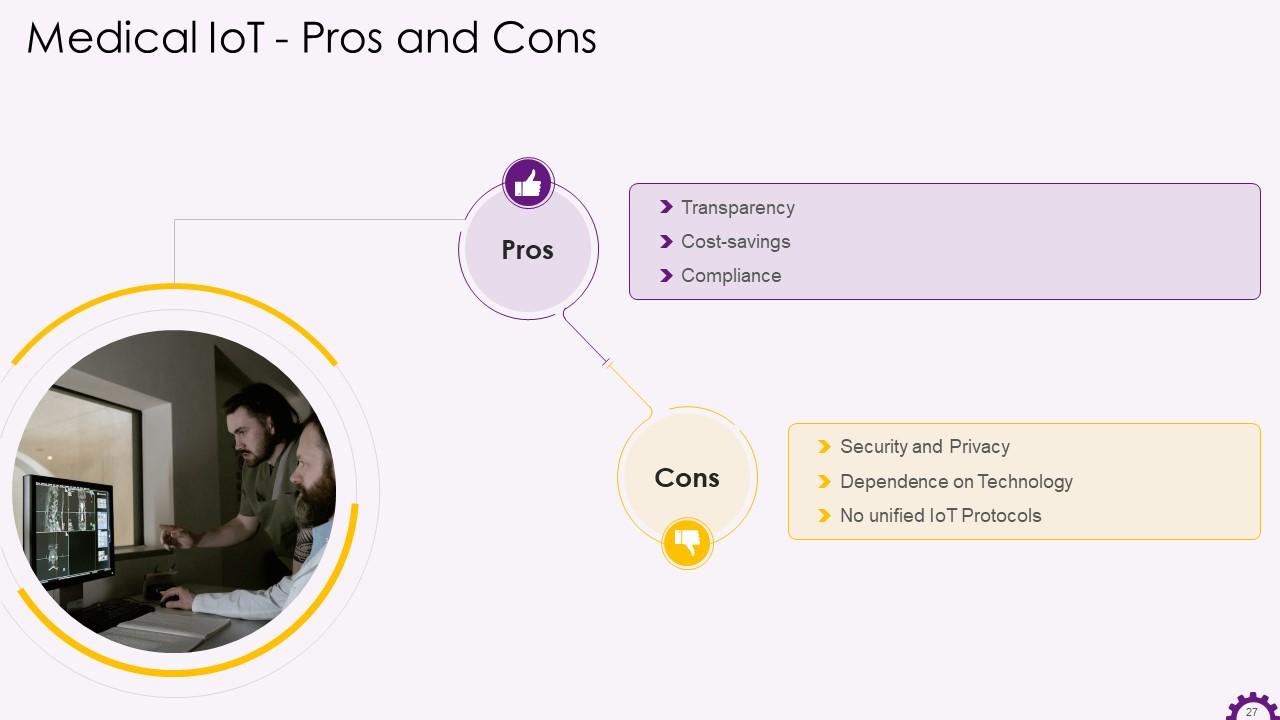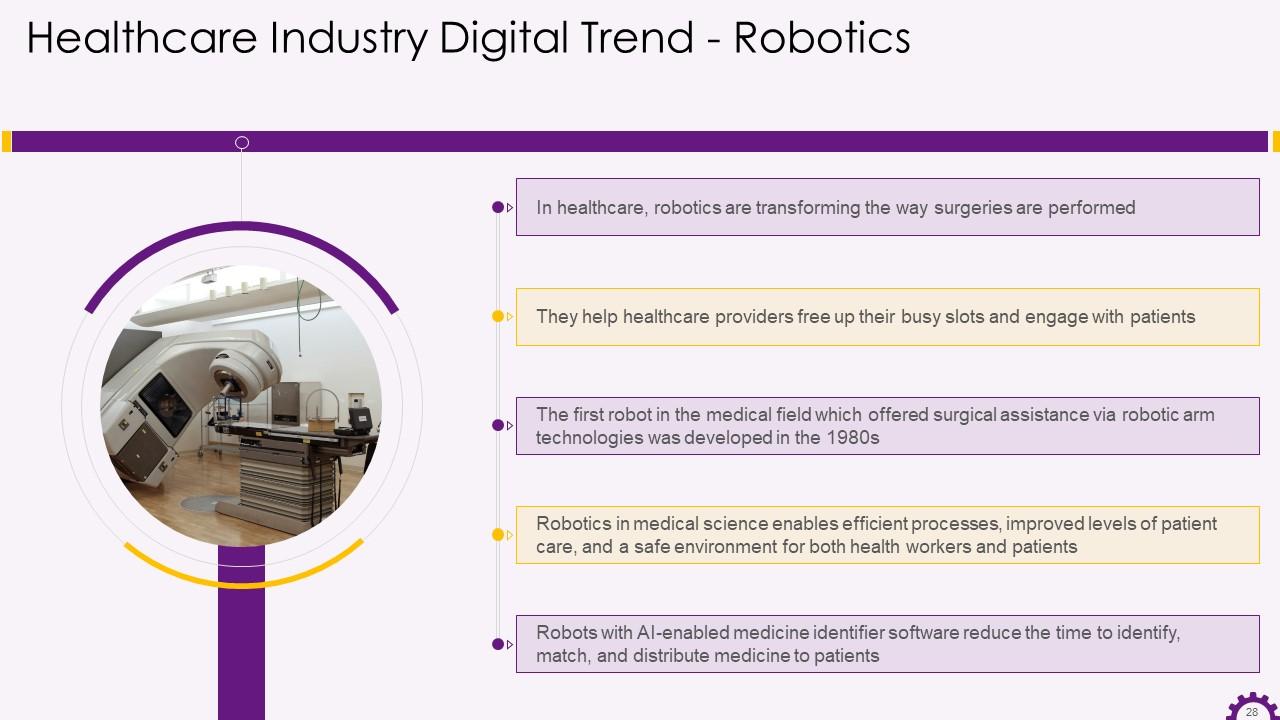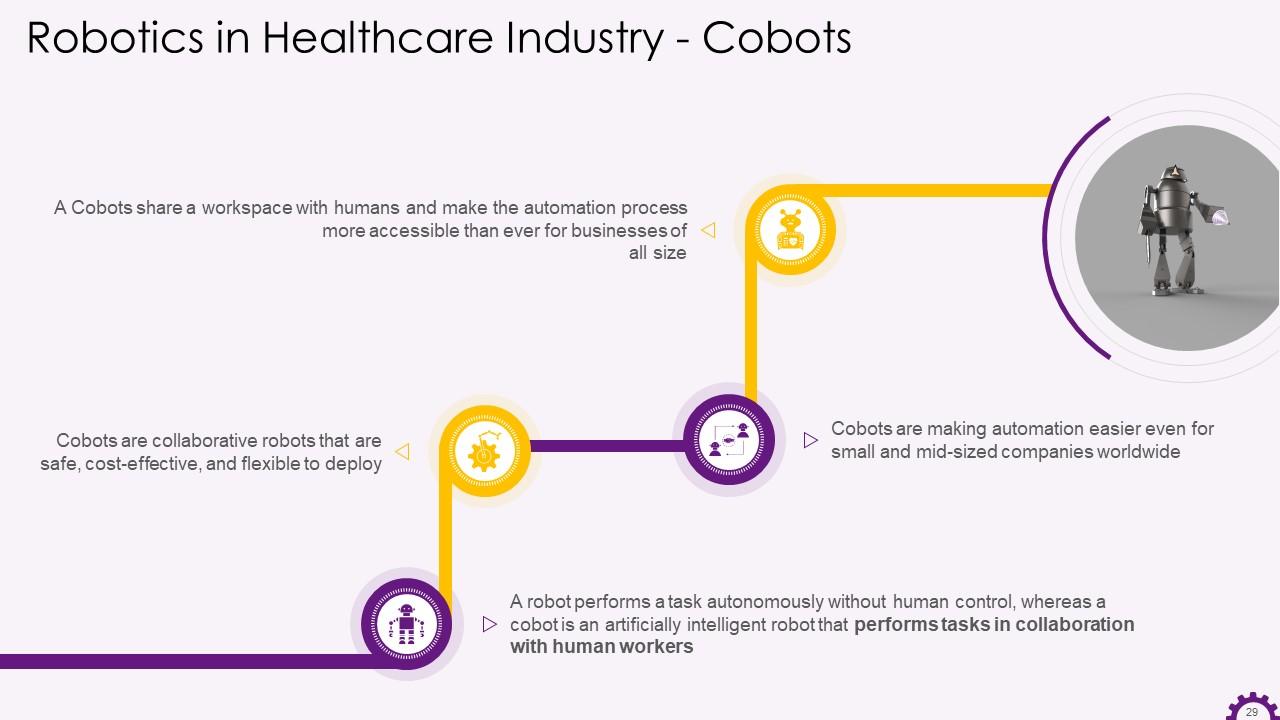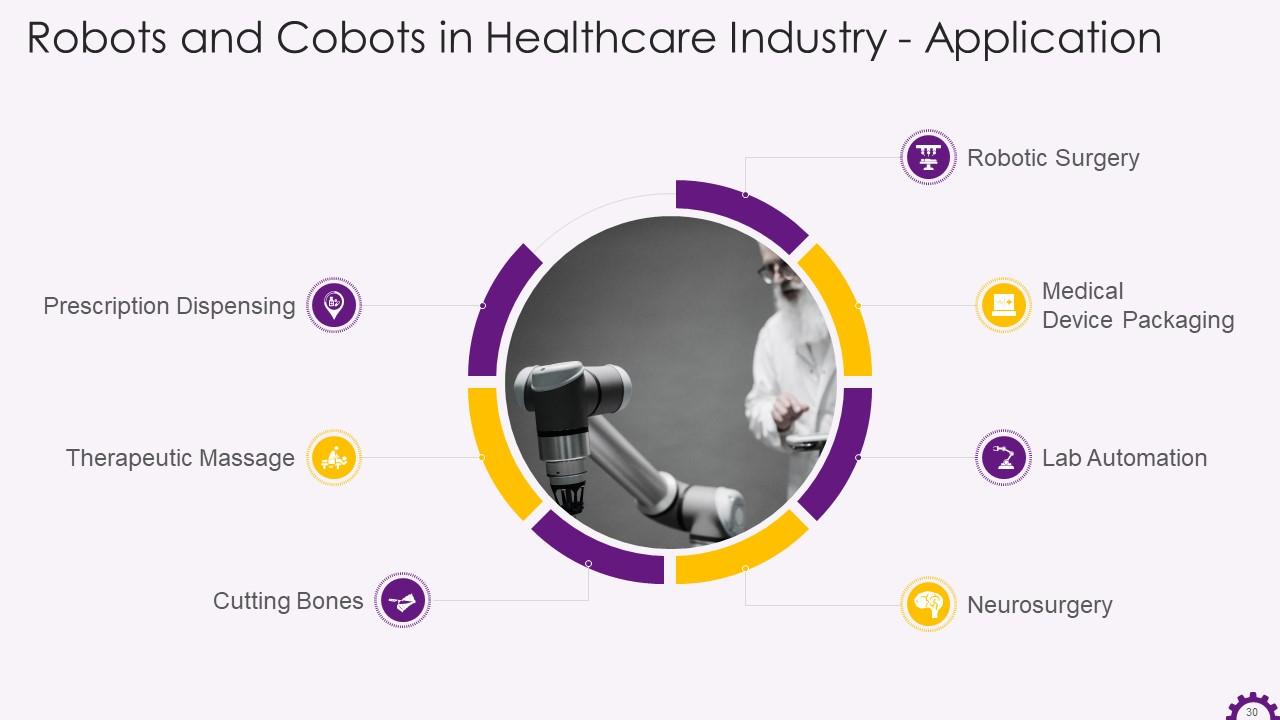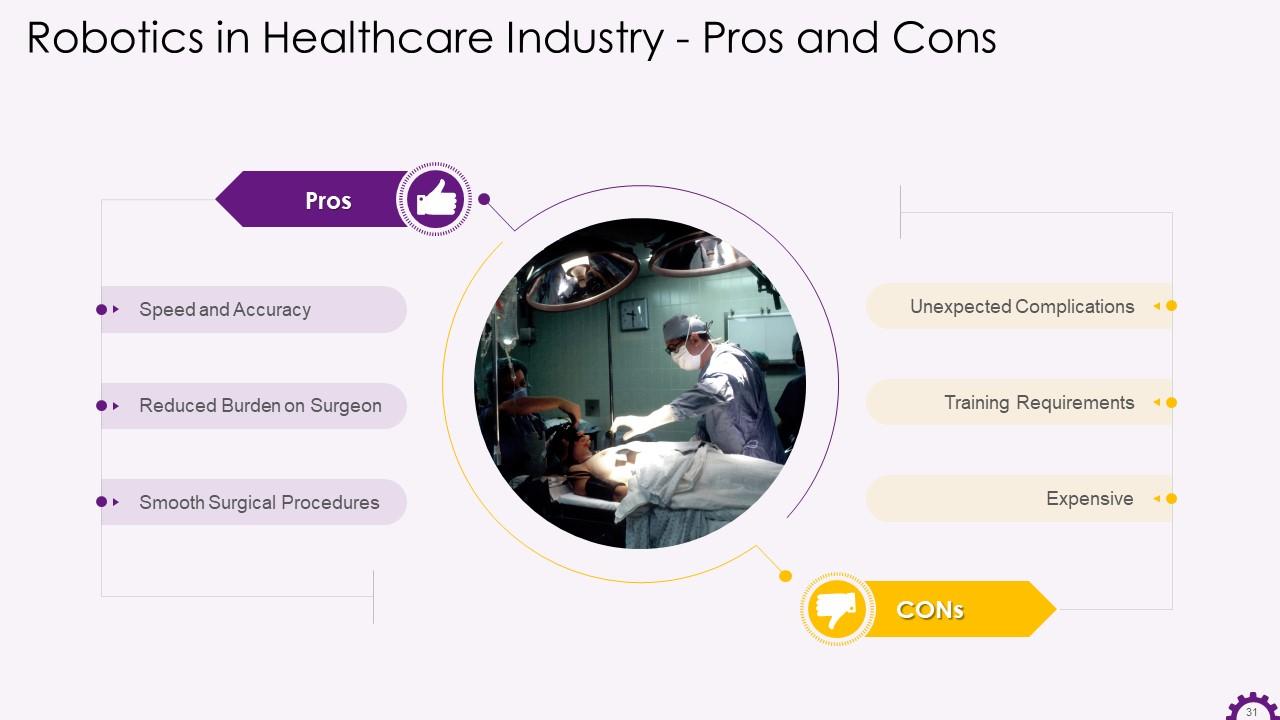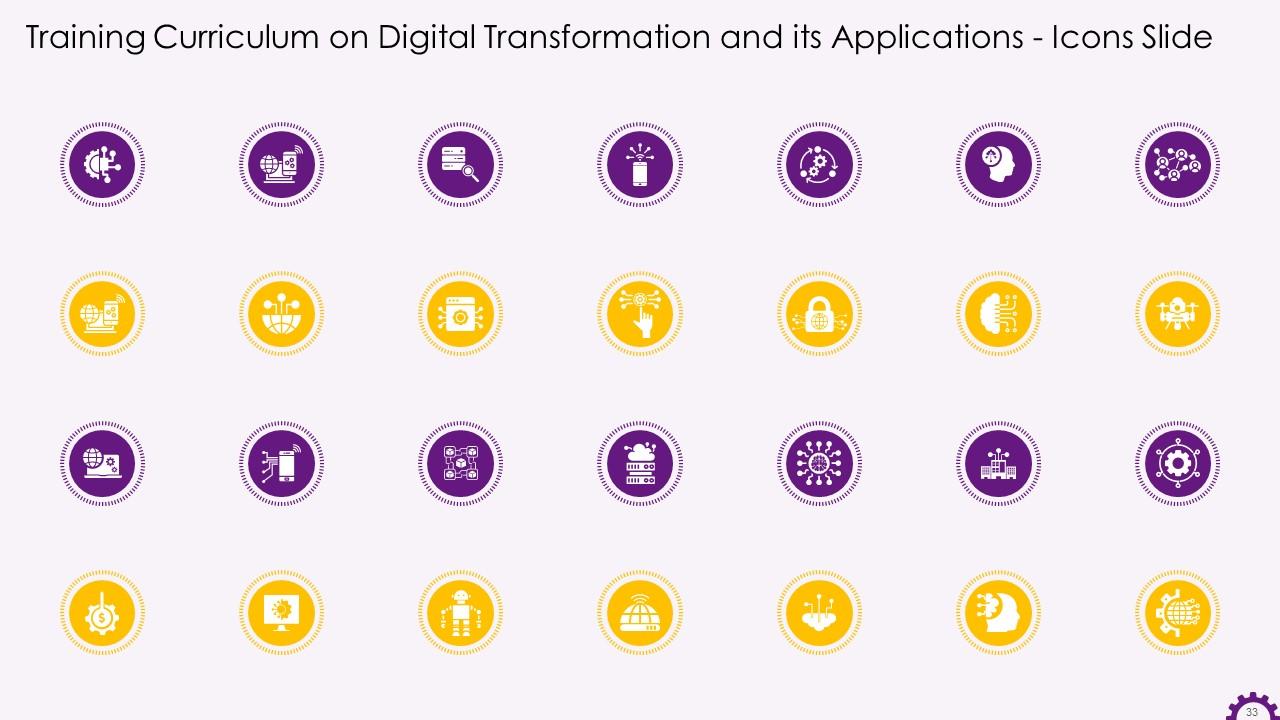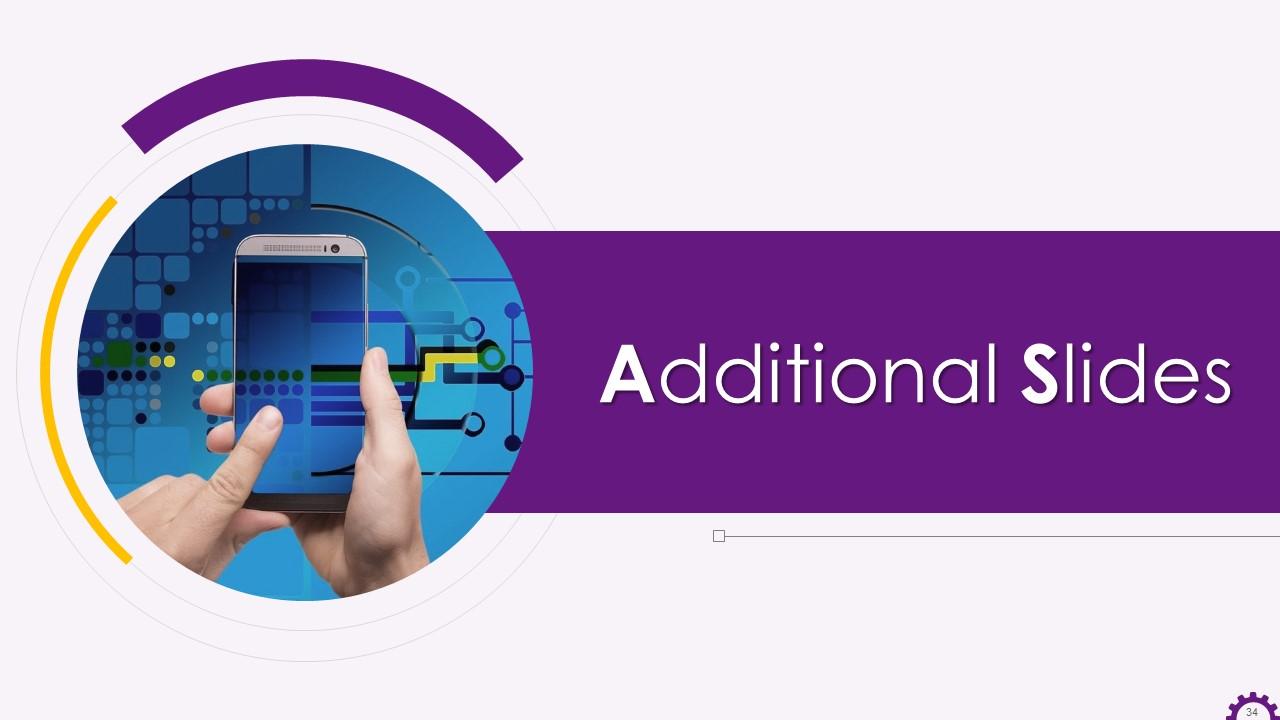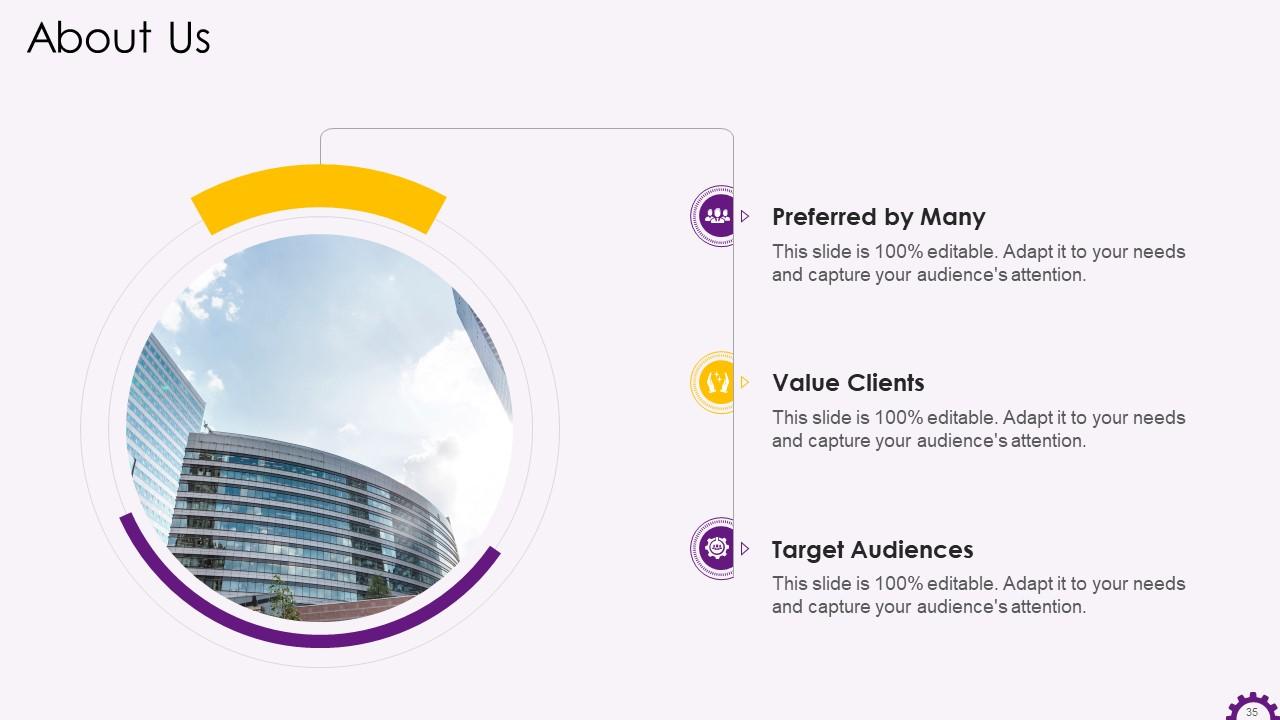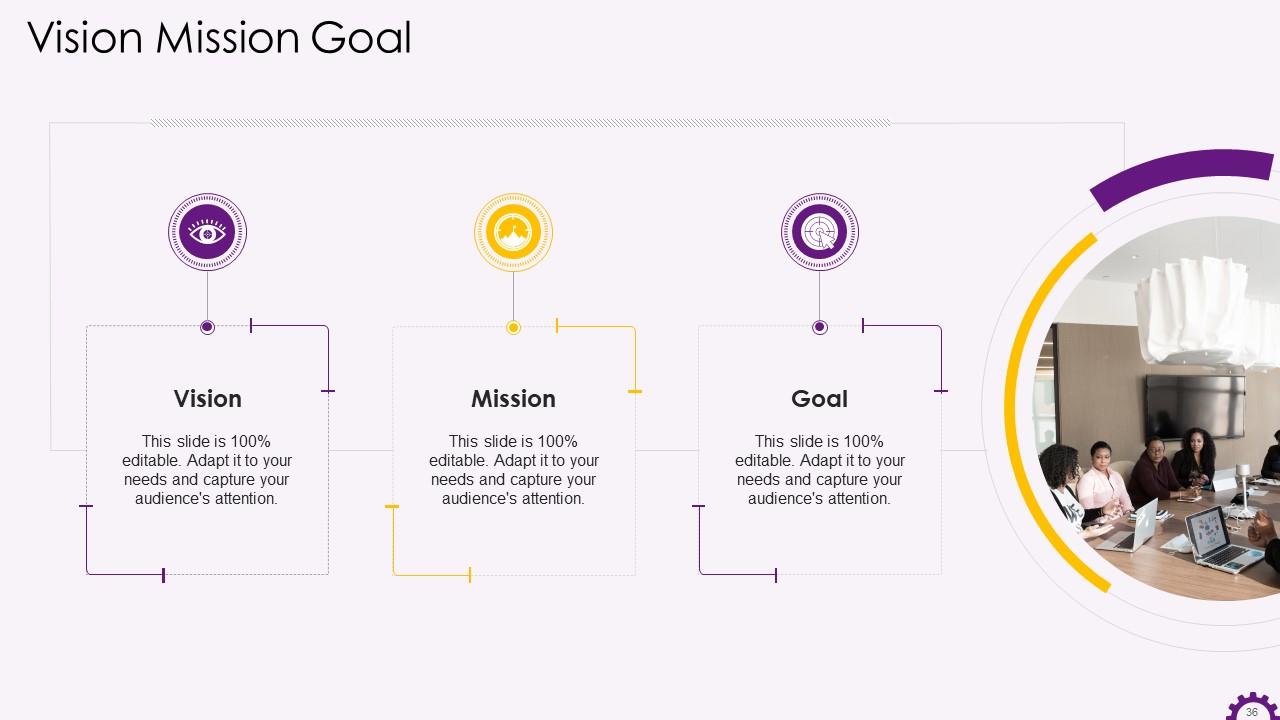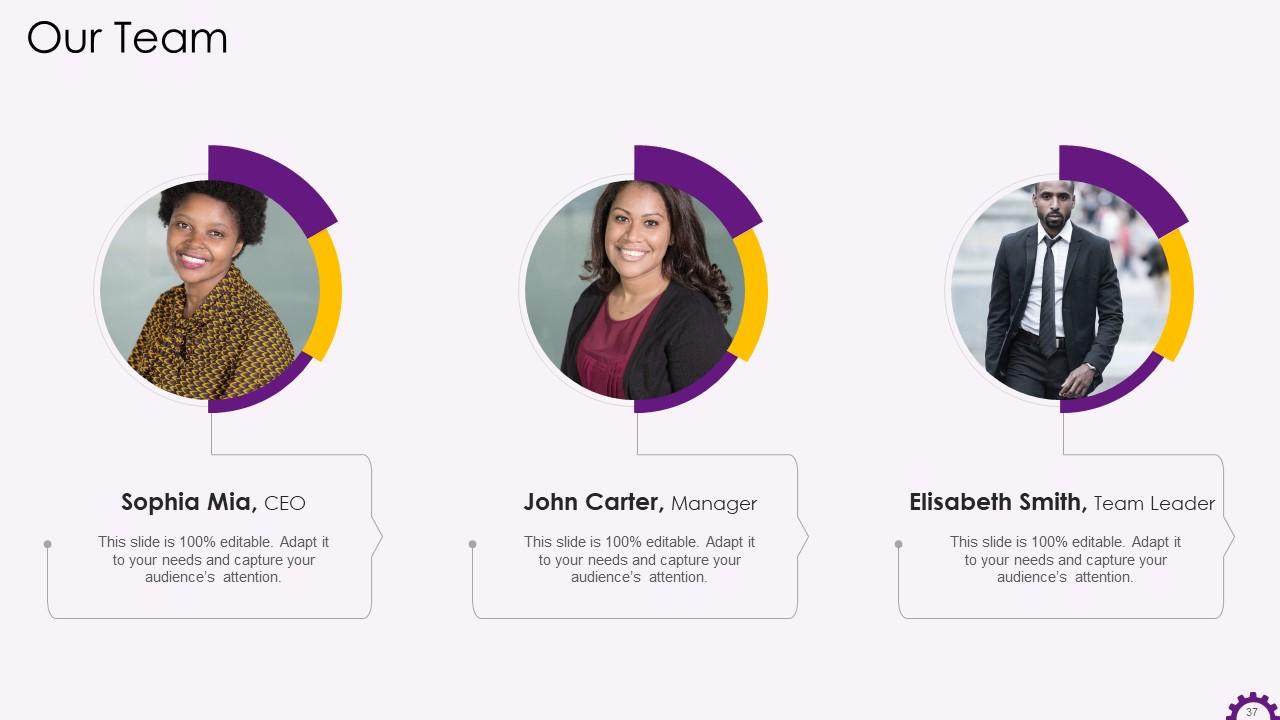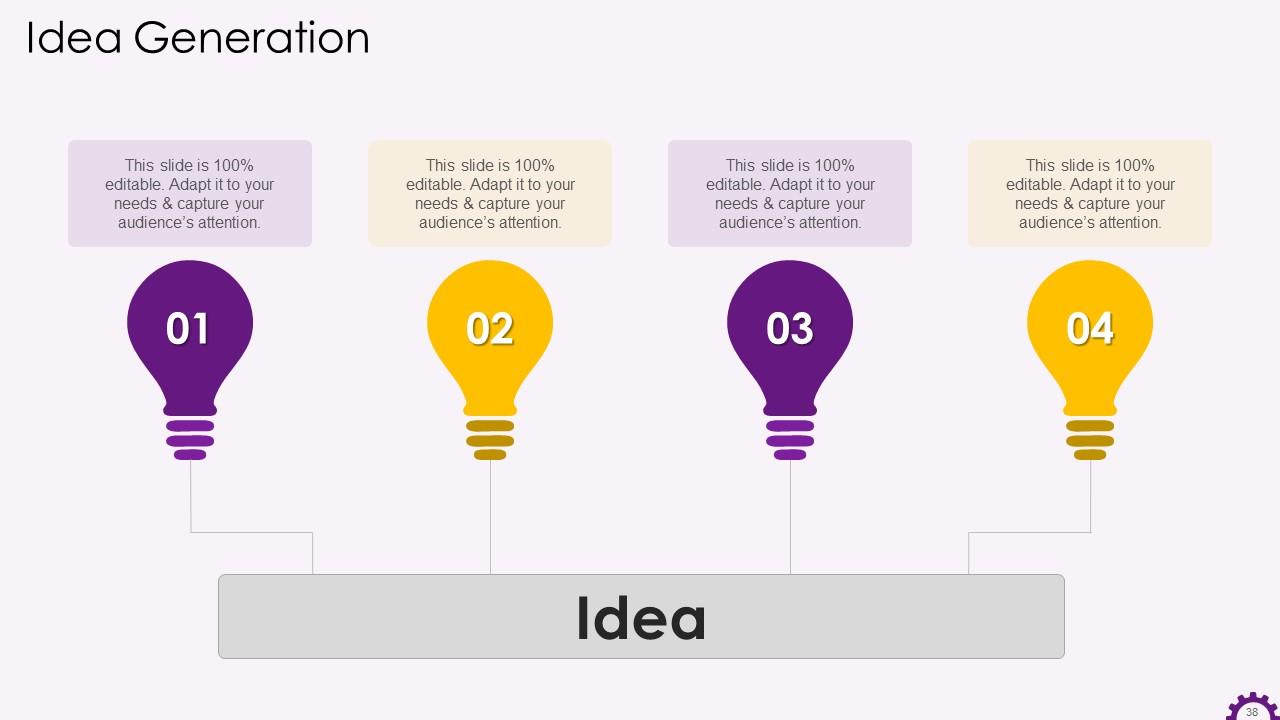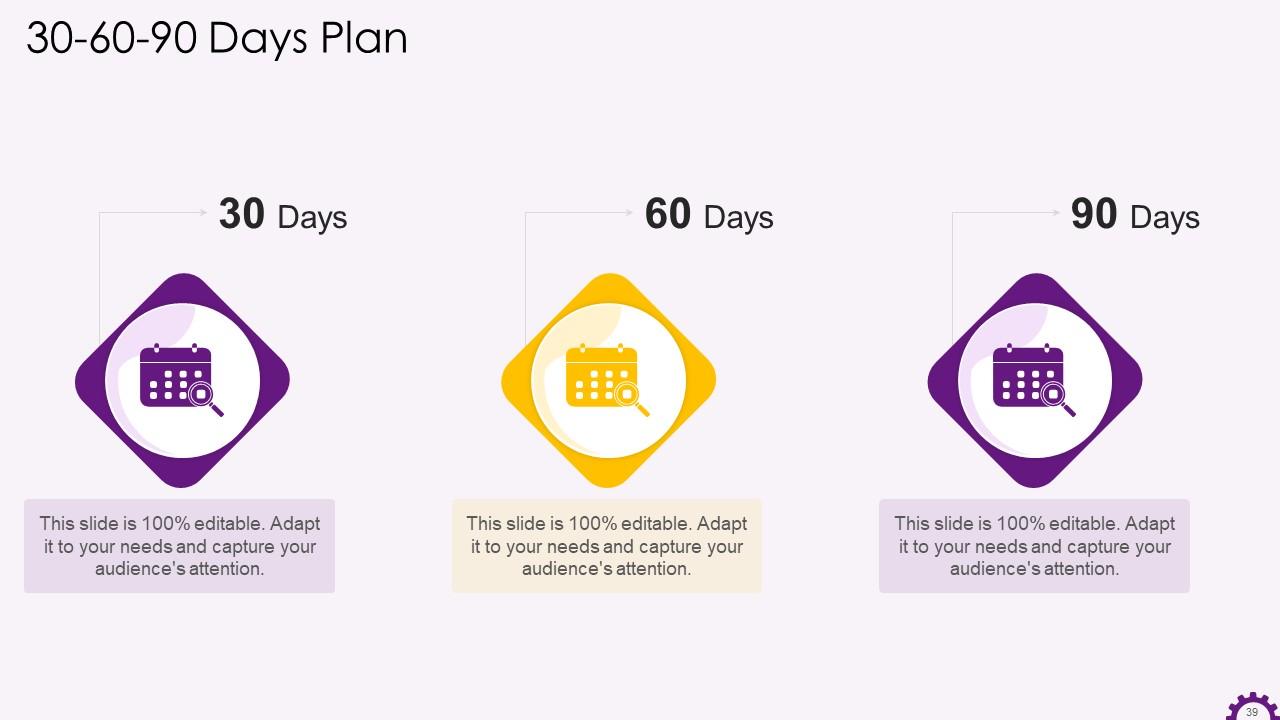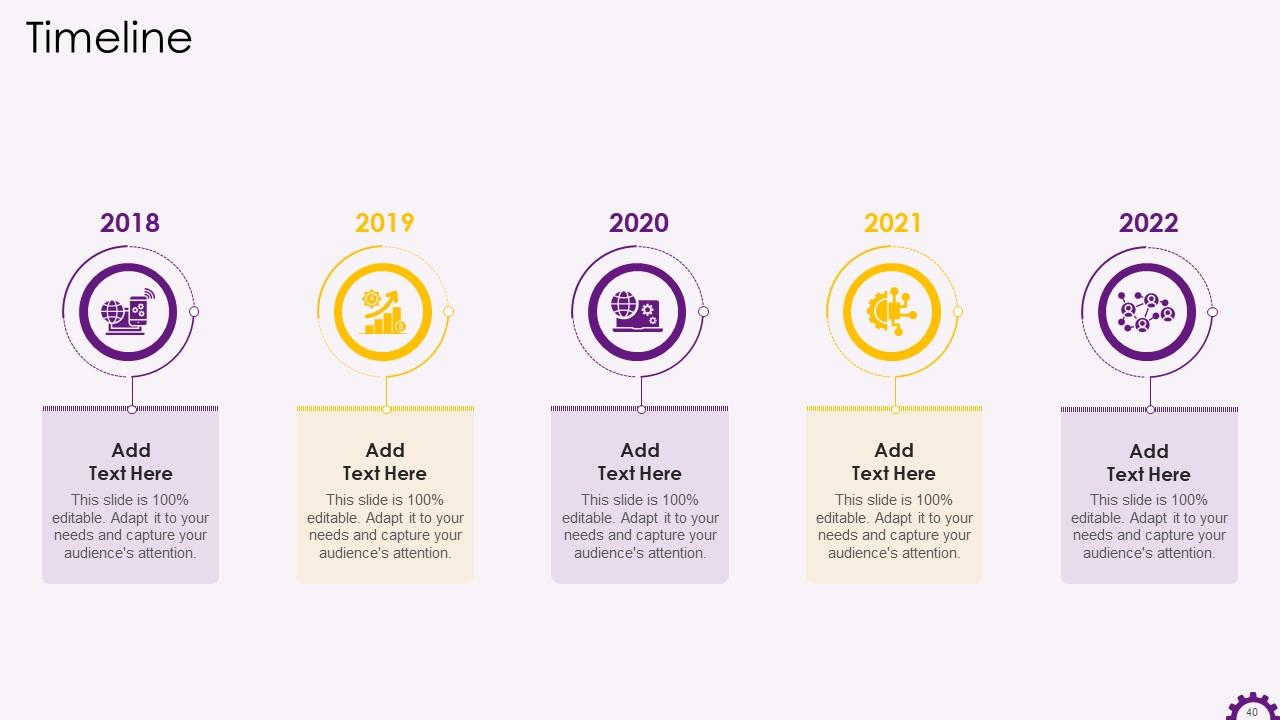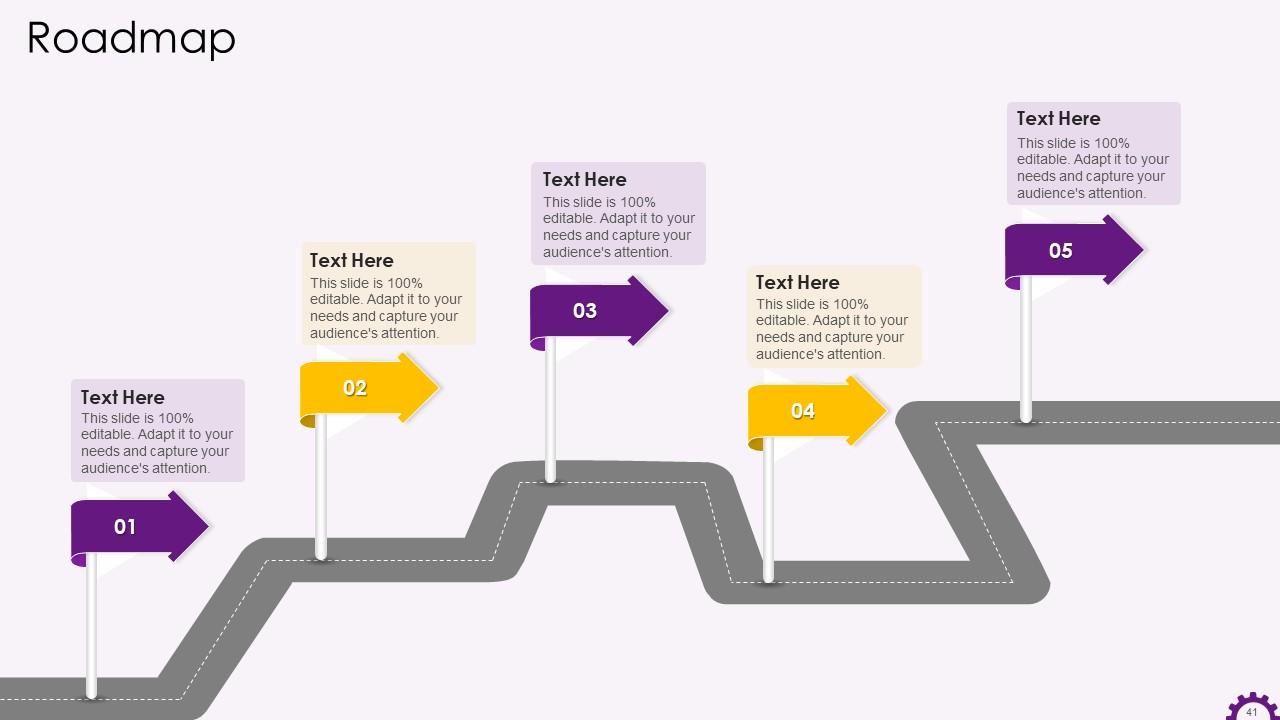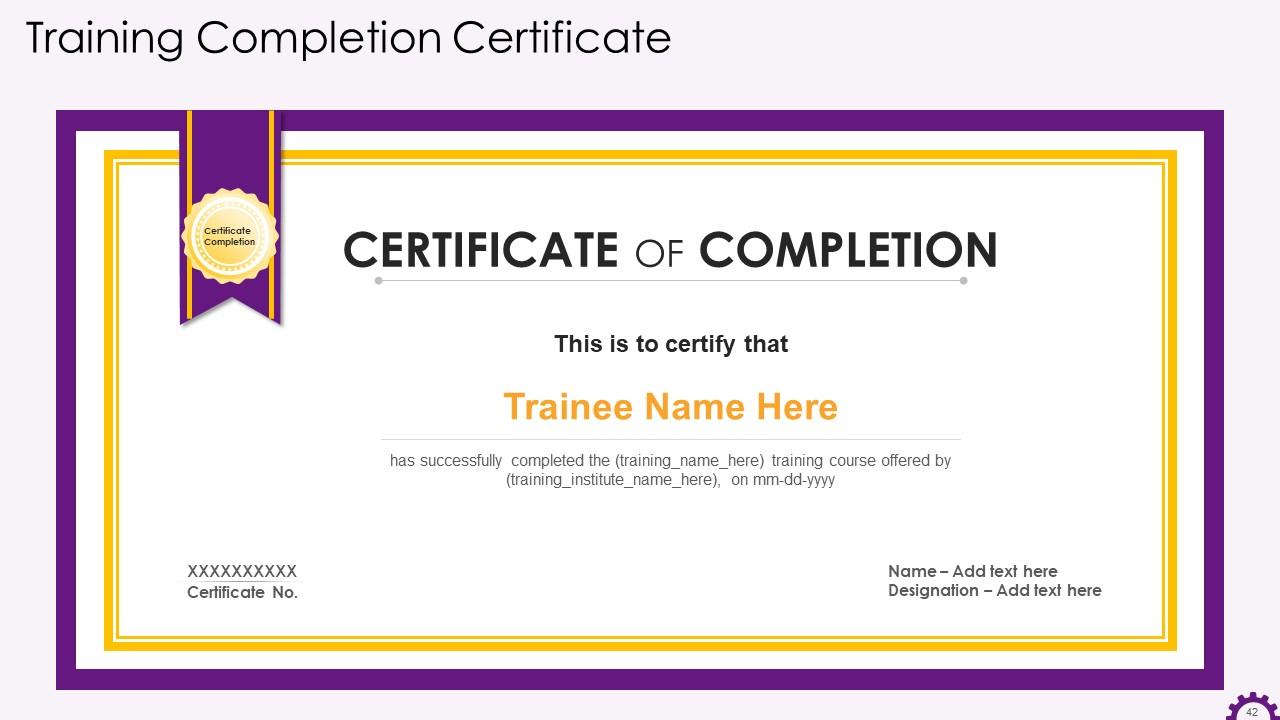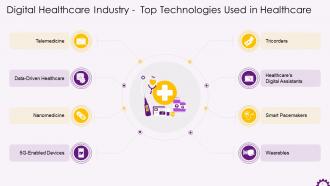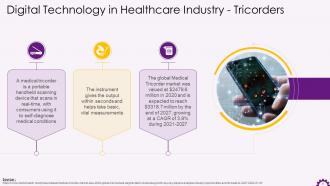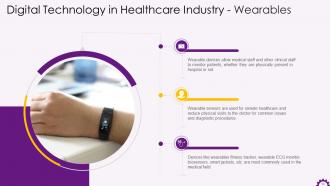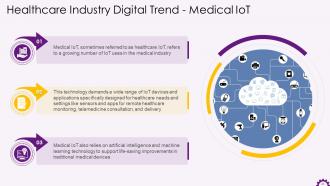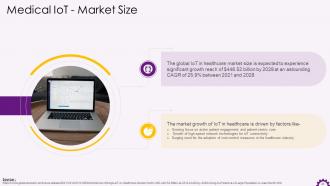Major Healthcare Technology Trends Training Ppt
This set of slides in detail covers the technologies used in the healthcare industry, such as telemedicine, nanomedicine, tricorders, and wearables. It also covers the digital trends healthcare industry, such as AI Artificial Intelligence, VR Virtual Reality, medical IoT Internet of Things, and the use of robotics.
This set of slides in detail covers the technologies used in the healthcare industry, such as telemedicine, nanomedicine, t..
- Google Slides is a new FREE Presentation software from Google.
- All our content is 100% compatible with Google Slides.
- Just download our designs, and upload them to Google Slides and they will work automatically.
- Amaze your audience with SlideTeam and Google Slides.
-
Want Changes to This PPT Slide? Check out our Presentation Design Services
- WideScreen Aspect ratio is becoming a very popular format. When you download this product, the downloaded ZIP will contain this product in both standard and widescreen format.
-

- Some older products that we have may only be in standard format, but they can easily be converted to widescreen.
- To do this, please open the SlideTeam product in Powerpoint, and go to
- Design ( On the top bar) -> Page Setup -> and select "On-screen Show (16:9)” in the drop down for "Slides Sized for".
- The slide or theme will change to widescreen, and all graphics will adjust automatically. You can similarly convert our content to any other desired screen aspect ratio.
Compatible With Google Slides

Get This In WideScreen
You must be logged in to download this presentation.
PowerPoint presentation slides
Presenting Major Healthcare Technology Trends. This PPT presentation is thoroughly researched by the experts, and every slide consists of appropriate content. All slides are customizable. You can add or delete the content as per your need. Download this professionally designed business presentation, add your content, and present it with confidence.
People who downloaded this PowerPoint presentation also viewed the following :
Content of this Powerpoint Presentation
Slide 1
This slide mentions the top technologies used in digital healthcare. The trending technologies are telemedicine, data-driven healthcare, nanomedicine, 5G-enabled devices, tricorders, healthcare’s digital assistants, smarter pacemakers, and wearables with a purpose.
Slide 2
This slide explains the meaning of telemedicine as a technology used in digital healthcare. It says that telemedicine is the use of telecommunications technology and information technologies to provide remote clinical services to patients. Physicians use telemedicine for the transmission of digital imaging, video consultations, and remote medical diagnosis.
Instructor’s Notes-
- Telemedicine refers to the art of caring for patients remotely when the patient and the healthcare provider are not physically present
- Telemedicine is conducted in numerous ways. The most basic form is a simple video call. However, most countries require a secured HIPAA (Health Insurance Portability and Accountability Act) compliant video conference tool for telemedicine process
Benefits:
- Telemedicine provides easy access to citizens in remote areas
- It allows informed decision-making
- It simplifies the health decision-making process
- It encourages communication between healthcare providers and patients regarding the prevention, diagnosis, or management of a health condition
Slide 3
This slide mentions the dos and don’ts of telemedicine services in healthcare. Health providers should pick the right communication platform, make the patients comfortable, offer convenient payment modes, use secure platforms, etc. Also, the Health officials should avoid using cell phones, sit in a dark room , and prefer not to look in hurry during the consultation process.
Slide 4
This slide explains the significance of big data in digitalization of healthcare. Big data is used extensively in healthcare to help identify and address both high-risk and high-cost patients. It is also used to identify high-risk areas where patients should be provided with more efficient healthcare to reduce spending and increase patient satisfaction
Instructor’s Notes:
- Big data is used extensively in healthcare to help identify and address both high-risk and high-cost patients
- Big data is used to identify high-risk areas where patients should be provided with more efficient healthcare to reduce spending and increase patient satisfaction
- As the data collection in healthcare continues to accelerate, its use becomes more widespread, and its potential for improving treatments, patient services, and patient outcomes also grows exponentially
Slide 5
This slide mentions the areas in which big data can be used in healthcare. It provides care for high-risk patients, innovative solutions in healthcare, preventive care, reduces costs, and helps in prevention of human errors.
Slide 6
This slide mentions the dos and don’ts of data management in healthcare. It emphasis on encryption of data before transfer, consolidation of data channels, and improving the data collection and quality. The officials should also make sure that they do not stick to a particular perspective, consider too many data sets at once, and expect complete results from technology alone.
Slide 7
This slide explains the meaning and significance of nanotechnology in the field of medical sciences. Nanomedicine involves using nanoscale materials, like biocompatible nanoparticles and nanorobots, for diagnosis, delivery, sensing or actuating purpose in a living organism.
Slide 8
This slide explains the relevance of 5G-Enabled devices in digital healthcare. 5G-enabled devices offer an opportunity to the healthcare system to upgrade to a more convenient, accessible, and reliable experience both the healthcare providers and patients. It reduces waiting time for treatments, increasing the number of daily appointments that health professionals can handle.
Slide 9
This slide explains the meaning and use of medical tricorders as an upcoming technology in medical sciences. It mentions that a medical tricorder is a portable handheld scanning device that scans in real-time and is used by consumers to self-diagnose medical conditions. It brings immediate results and takes basic, but vital measurements.
Instructor’s Notes:
- In 1996, The first "real-world" tricorder was developed by a Canadian company called Vital Technologies Corporation
- The first scanner was called the TR-107 Mark 1, and the company Vital Technologies sold 10,000 of these before going out of business in 1997
Slide 10
This slide explains the importance of digital assistants in healthcare. Digital assistants in healthcare can include voice assistants or chatbots. These tools enable the healthcare centers to answer queries, using apps to monitor health conditions like heart rate, etc., guide in using wearable devices that track fitness levels, etc.
Slide 11
This slide explains the utilization of smart pacemakers in digital healthcare. It mentions that smart pacemaker is used to prevent heart failure. A pacemaker is implanted permanently to fix a chronic slow or irregular heartbeat or to help treat heart failure.
Slide 12
This slide explains the meaning and significance of wearables in digitalization of healthcare. Wearable devices allow the medical staff and other clinical staff to monitor patients closely whether they are physically present or not. Wearable sensors are used for remote healthcare and reduce physical doctor visits for common issues and diagnostic procedures.
Instructor’s Notes:
Impact of using Wearables in healthcare-
- With patients' physiology remotely measured in real-time, hospitals can improve their effectiveness, free up beds. . Doctors can focus on patients' vitals regardless of location, increasing their productivity
- Monitoring systems developed in wearables improves the quality of clinical assessment.
- Wearables medical devices offer critical and effective monitoring procedures. These can replace a wide range of existing medical monitoring systems and products
- Medical wearables ease the diagnostic process and are expected to witness a higher adoption at clinics, labs and diagnostic centers
Slide 13
This slide mentions the top digital trends in healthcare. The trends are increasing Artificial Intelligence (AI) investments in healthcare, virtual reality transforming medical field, medical IoT developing rapidly, and use of robotics.
Slide 14
This slide mentions meaning and use of artificial intelligence in healthcare. It explains that Artificial Intelligence in healthcare uses machinery to analyze and act on medical data, usually to predict a particular outcome. It helps the medical providers deliver more accurate diagnosis and treatment plans and it is considered a powerful tool in global public health for combating pandemics and epidemics
Slide 15
This slide illustrates various points of impact of artificial intelligence on healthcare. Artificial Intelligence in healthcare brings more precise analytics, brings intelligence to medical devices and machines, monitors health using wearables and personal devices, reduces burden of maintaining electronic health records, and expands access to care in remote areas.
Slide 16
This slide mentions the statistics relating to growth potential of Artificial Intelligence (AI) in healthcare. It explains that factors like increasing healthcare costs, need for improved healthcare services, etc encourage the growth of AI in healthcare.
Slide 17
This slide mentions the statistics relating to application of artificial intelligence in healthcare and their potential annual values.
Slide 18
This slide mentions the advantages and disadvantages of implementing artificial intelligence in healthcare. Artificial Intelligence in healthcare fosters accessibility, saves time and cost, ensures early detection of diseases and risks, and augments human abilities. AI in healthcare is prone to errors, includes training complications, and lacks the personal touch.
Slide 19
This slide mentions meaning and use of Virtual Reality in healthcare. It says that VR in healthcare is the technology that allows health officials to simulate a situation or an experience of interest using a VR headset within an interactive but computer-generated environment
Instructor’s Notes:
Significance:
- Teaching hands-on skills with VR technology in healthcare is an excellent learning resource and can be used to create scenarios for training healthcare professionals
- VR in healthcare creates a realistic world enabling the user to explore places inside human body
- VR makes medical education easy and comfortable
Slide 20
This slide illustrates the key application areas of virtual reality in healthcare. VR in healthcare is applicable in medical education, diagnostics, treatment of mental illnesses, pain management, physical fitness and therapy, surgery, human simulation techniques, and many other techniques like dentistry etc.
Slide 21
This slide mentions the statistics relating to global market size of virtual reality in healthcare.
Slide 22
This slide mentions the positives and negatives of Virtual Reality(VR) in healthcare. VR offers a detailed view of the human body, is helpful in multiple areas, and provides an engaging experience. VR is a high-cost affair in healthcare that does not offer any real experience and has sophisticated technological requirements.
Slide 23
This slide mentions the concept of medical IoT. It explains that medical IoT, sometimes referred to as healthcare IoT, refers to a growing number of IoT uses in the medical industry. Medical IoT relies on artificial intelligence and machine learning technology to support life-saving improvements in traditional medical devices.
Slide 24
This slide mentions the reason of existence of medical IoT and how it is improving the healthcare sector. It is stated that it helps to improve patient outcomes through real-time patient monitoring, advanced diagnostics, robotics surgery, etc. It offers new opportunities for healthcare providers to improve patient care and manage the inherent complexity of the healthcare processes through improved automation, safety, and other technological gains
Slide 25
This slide explains the areas of applicability of medical IoT. Medical IoT assists in remote patient monitoring, glucose monitoring, heart-rate monitoring, hand-hygiene monitoring, depression and mood monitoring, Parkinson’s disease monitoring, etc
Slide 26
This slide depicts the market position of medical IoT and what factors are responsible for growth of this area.
Slide 27
This slide mentions the advantages and disadvantages of medical IoT in healthcare. Medical IoT offers transparency of data, is cost-saving and compliant. Medical IoT is sometimes dependent on technology, lacks security, and provides no unified IoT protocols.
Slide 28
This slide mentions the significance of robotics in healthcare and how they are transforming the way medical science is performing today. It explains that robotics in medical science enables efficient processes, improved levels of patient care, and a safe environment for both health workers and patients. Robots with AI-enabled medicine identifier software reduce the time to identify, match, and distribute medicine to patients.
Slide 29
This slide mentions the meaning of Cobots as a type of robots in healthcare. It also explains how Robots and Cobots are differentiated in assisting healthcare officials.
Slide 30
This slide mentions the areas of application of Robots and Cobots in healthcare. They assist in surgeries, packing, automation of processes, neurosurgery, prescription dispensing, and many more areas.
Slide 31
This slide mentions the positives and negatives of robotics technology in healthcare. Robotics offers fast processes, reduces the burden on surgeons, and offers smooth surgical procedures. Robotics in healthcare are expensive and have high training requirements and unexpected complications.
Major Healthcare Technology Trends Training Ppt with all 47 slides:
Use our Major Healthcare Technology Trends Training Ppt to effectively help you save your valuable time. They are readymade to fit into any presentation structure.
-
Great designs, Easily Editable.
-
The designs by SlideTeam are honestly the best I have seen so far. Will be definitely coming back for more.



